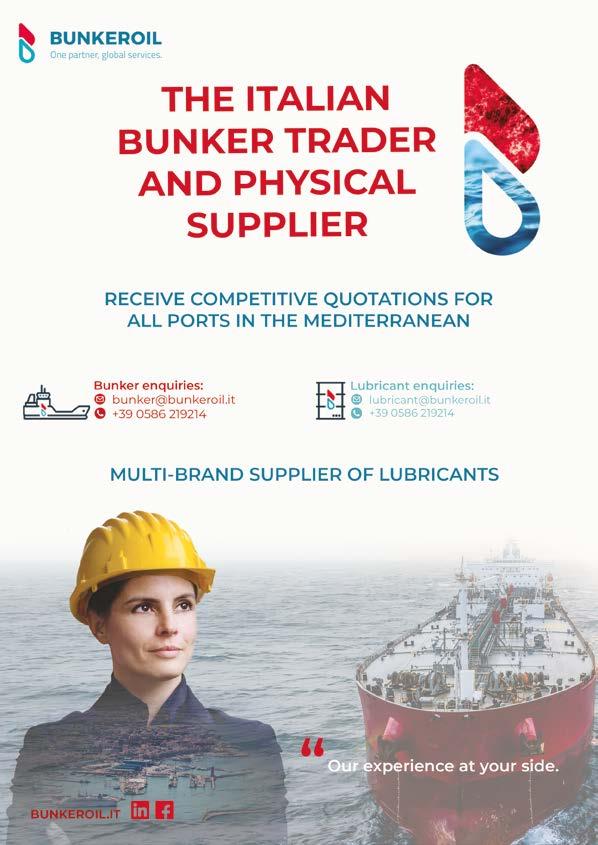




In the years running up to IMO adopting its sulphur regulations some of us were pointing to, albeit quite thin, evidence that shipping pollution caused by burning fuel with a high sulphur content, and emitting particulates dangerous to human health, helped cool the planet.
As reported in our Environmental News pages, Oxford-based scientists have confirmed that not only does that occur but the cooling effect is significantly more than previously thought.
Does this mean we ought to rethink the IMO sulphur regulation? Even if that were politically possible, the answer has got to be: “Probably not”. But it should give food for thought that while the shipping industry is putting great effort into reducing its carbon footprint it has also worked hard on implementing something that actually contributed to global warming but, at least in coastal areas, benefitted human health.
This episode does underline just how complex and difficult the decisions facing the shipping and bunkering industries really are. For complexity, read our IMO pages. Actually, the report by IBIA Director and IMO representative Unni Einemo on how flashpoint regulations are to be amended to prevent the supply of fuels in breach of the minimum 60°C flashpoint limit in SOLAS is a masterpiece in cutting through to the essential details.
As Unni notes, IBIA has worked hard to ensure the amendments are pragmatic and workable. “Now,” she says, “we need to ensure these new regulatory elements are properly understood, as there is scope for confusion.”
If you don't read anything else in this issue, please do read Unni's report. It is important and a thorough understanding of the
new amendments could prove invaluable when confronted with a port state control inspector who has misunderstood them.

Having said that, please, please, do read the whole magazine. We have a packed issue with our normal range of topics, though perhaps most of them deal with difficult decisions. Going back to the Environmental News pages, there are two hot issues where decisions will be made soon. The International Chamber of Shipping has proposed that IMO set up a 'fund and reward' global taxation and spending scheme, based on levies on bunker deliveries. This borrows heavily in its concept from the Research and Development Fund which several shipping organisations unsuccessfully proposed to the IMO several times over the past three years, despite continuously tweaking the proposal in response to concerns raised.
The other Environmental News story covering difficult decisions relates to the impending final shape of the EU Emissions Trading System (ETS) as it will apply to shipping. The shipping industry, resigned to the inevitability of the ETS, is making one last charge at getting the funds raised from shipping to be actually used for the industry's transformation to net zero. Good luck with that. Meanwhile the European port operators’ association FEPORT can recognise an impending bureaucratic disaster when it sees one and is imploring the EU to make sure shipowners don't take measures to minimise their exposure to the ETS. As if they would.
Now for yet more difficult decisions, but this time ones that need to be taken by the industry's chief executives and company board members when they order new ships. Much of this issue looks at the new fuels being developed at great pace. One interesting theme that has become apparent is a tendency to
hedge bets. The big technology groups are backing multiple horses when it comes to alternative fuels while, increasingly, ships are being designed with the ability to use multiple fuels.
Whisper it softly to avoid upsetting the green lobby, but it is also starting to become a realistic possibility that shipping might be able to carry on using fossil fuels and still achieve net zero. Our pages on Carbon Capture look at some exciting new developments.
So, we say goodbye to another turbulent year. On the bright side, once the festive season is past, we have the IBIA Dinner to look forward to. See you there.
wishes David Hughes Editor
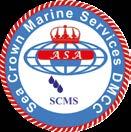


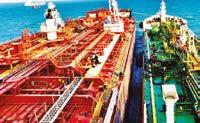

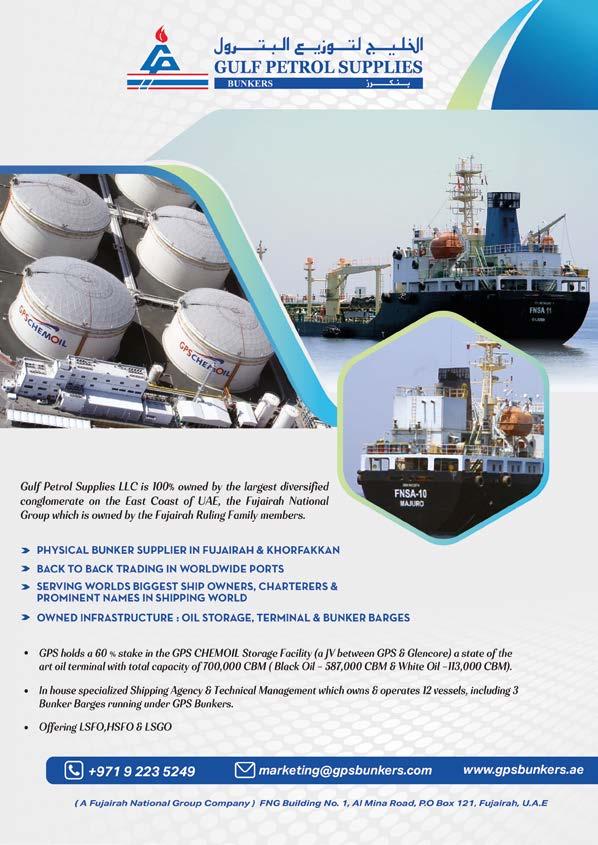
IBIA’s Annual Convention and the first ever Americas Board meeting highlighted the importance of both global and regional engagement
Iam writing this letter right as our IBIA Annual Convention draws to a close in Houston.
The four days I spent in the US have been energising to say the least, highlighting once again how relevant the work that IBIA is doing is and how important it is that we communicate about what we do to be the voice of the marine fuel industry and, at the same time, gather feedback from members on how we can keep on growing and improving.
Decarbonisation and market uncertainties, as usual, dominated most of the conversations in Houston and I found it very encouraging to see IBIA members and industry players at large engaging in constructive discussions on what the future of our sector looks like. Plenty of disagreements, of course, which I personally find very positive as by evaluating different alternatives and points of view will likely allow us, as an industry, to reach a better end situation.
I am extremely grateful to our Secretariat team and to the IBIA Events Working Group for making this event a success as we returned to the US after many years.
Part of the “energy” revolving around the Houston event came from our first ever Americas Regional Board meeting, chaired by our IBIA Treasurer Adrian Tolson. As an attendee to the meeting, I had the opportunity to appreciate how important it is – for an organisation like IBIA - to maintain a balance between having a global perspective as well as a deep understanding of regional and local dynamics.
The discussions I had with the Regional Board as well as with other convention attendees, also reinforced the idea of how central our seat at the IMO is in the context of being the industry voice, representing our members’ ideas and concerns. The work that Unni has done – and that she
continues to do – is incredibly appreciated not only by IBIA members themselves, but also from industry players. We are grateful for the deep know-how that Unni is able to bring to the table as this is certainly one of the factors that makes IBIA special.
I will close with a now common “call to action” from my side. Do not forget that IBIA is a member-led organisation and IBIA’s success depends on whether members take the initiative and dedicate their time and effort to enabling real change in the industry. We are living through challenging and exciting times for the marine fuel industry and the opportunity for change
and evolution to happen is there, and we count on all members to raise their hand and take the opportunity to join a Regional Board, a Working Group or the Global Board!
I look forward to seeing you all in person in London for our Annual Gala Dinner and to celebrate the 30th anniversary of the Association.
Ciao Timothy Cosulich, Chair
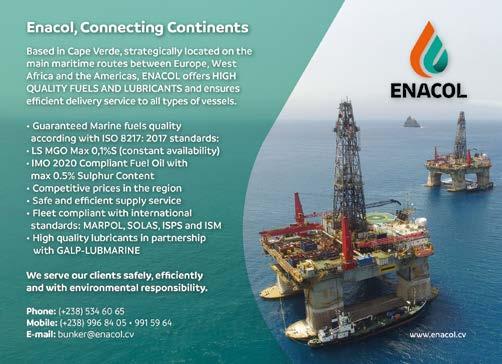
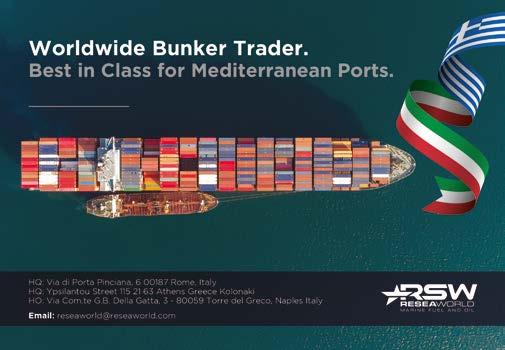
During the final quarter of 2022, my schedule has filled up with representing IBIA at the IMO, at our Annual Convention, other conferences and more. There’s lots of work in progress, so it is great to see one project come to fruition which could make a great stocking filler!
As I write this, the IBIA Annual Convention 2022 can safely be declared a success! I extend huge thanks to our sponsors, the IBIA Board, and my colleagues in the IBIA Secretariat their valuable contributions and tireless work to help bring us all together in the bunkering and global energy hub, Houston. I believe all who attended had a rewarding time with us, examining major themes that occupies the marine fuels sector these days; chief among them how to deal with the energy transition. For Houston to remain a global leader in energy, and for shipping to play its part in reducing global greenhouse gas emissions, we need to work as fast as we can to identify the best energy sources and technology solutions to reduce, and ultimately eliminate man-made GHG emissions. We are on a journey that will require committed efforts and cooperation from multiple stakeholders to put us on the right trajectory.
For now, oil-based fuels still dominate global shipping and our sector still faces many of the same problems today as we have for as long as I can remember, such as quality and quantity disputes and a lack of trust between suppliers and buyers. But we are seeing improvements; some through concrete tools such as mass flow meters and other means of tracking and monitoring data. All of this and more was examined during our Convention in Houston against the backdrop of a world that has emerged from the worst ravages of the COVID-19 pandemic, only to be plunged into new market volatility following Russia’s invasion of Ukraine.
During Q4, I have been honoured to represent IBIA at several external events too. In October, I spoke at the Singapore International Bunkering Conference and Exhibition (SIBCON) and the Argus Fuel Oil and Alternative Marine Fuels US Summit, in November I spoke at a World Shipping Council workshop devoted to low and nearzero GHG fuels, and I am due to speak at the S&P Global Barcelona Bunker Fuel Conference in December.
There has also been lots of activity at the IMO since the Q3 issue of World Bunkering went to press, and more to come. In September, I attended the 8th session of IMO’s Sub-Committee on Carriage of Cargoes and Containers (CCC 8), where we are working on interim guidelines for the safety of ships using un-conventional fuels. This is urgently needed to ensure decarbonisation doesn’t sacrifice the safety of ships and crew. You can find articles from CCC 8 in the news section of the IBIA website.
In November, IBIA took part in the 106th session of the IMO’s Maritime Safety Committee (MSC 106) where regulatory amendments relating to flashpoint were adopted, which I have detailed in a feature in this issue. In addition, MSC 106 had discussions about off-specs bunker fuels and bunker licencing which I have yet to report on but this, too, will be available on the IBIA website soon.
From December 5 to 16, I will once again be at the IMO, first for the 13th session of the Intersessional Working Group on Greenhouse Gases (ISWG-GHG 13) and then the 79th session of the Marine Environment Protection Committee. MEPC 79 will continue discussions on GHG, scrubber discharges and black carbon emissions, and is expected to adopt regulatory amendments that will require flashpoint to be recorded on the BDN and confirm a new emission control area (ECA) reducing the sulphur limit to 0.10% in the Mediterranean Sea – among other things.
As you may be aware, in the wake of the serious incident of fuels contamination in Singapore earlier this year, the Maritime and Port Authority of Singapore (MPA) and the Singapore Shipping Association (SSA) have set up an International Expert group (IEG) to make recommendations on additional measures to strengthen quality assurance of bunkers delivered in Singapore. IBIA is supporting this work and
I am humbled to represent IBIA in the IEG. By the time you read this, we have already had three meetings to work on this highly ambitious project.

All of this keeps me rather busy, which brings me to the point made in my headline. Like all good citizens, what I want for Christmas is peace and goodwill for all on earth, but I fear that is too much to wish for. So, I will settle for something more achievable; a bit more harmony and understanding between bunker suppliers and buyers, which brings me to the aforementioned Christmas stocking filler. IBIA has been working on a project with BIMCO to produce a joint publication, the Shipmaster’s Bunkering Manual, and it is finally out! This practical, hands-on industry guide aims to facilitate smooth and safe bunker deliveries around the world. You will find information on where to buy it elsewhere in this issue of World Bunkering
What I also want, as this year draws to a close, is a chance for all of us to spend some time with our friends and loved ones, and to recharge our batteries so we can be refreshed and ready to resume our work in 2023. I wish you a happy holiday season, and see you next year!
Unni Einemo, Director, IBIA E: unni@ibia.net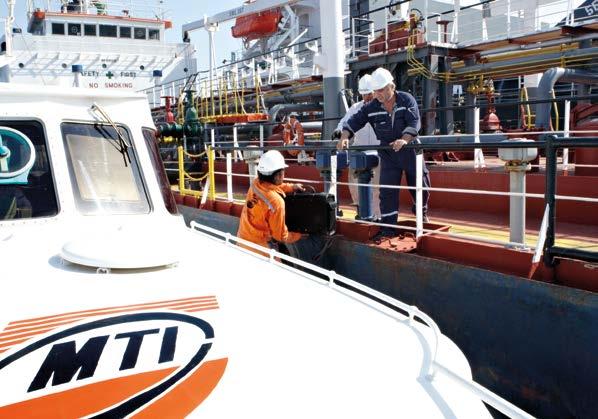
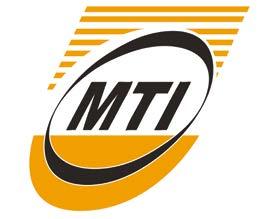

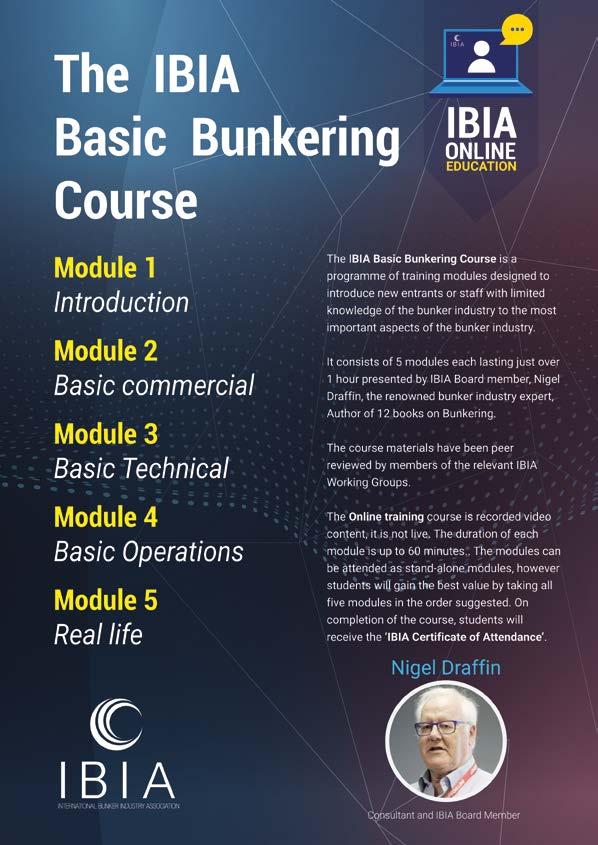


We have wrapped up IBIA’s 2022 events, and it is onwards and upwards as we reach our 30th anniversary in 2023!
The first IBIA Mediterranean Energy and Shipping Conference took place in Malta on 13 September. A total of 169 people participated in the Conference, including Malta’s Minister for Environment Energy & Enterprise and Minister for Transport, Infrastructure and Capital Projects. The conference was supported by Transport Malta and by the Enemed and Evos terminals, as well as other national and international companies who sponsored, supported, participated, and gave their insights about the industry. We would like to thank each and every one of them for their valuable contributions.
The conference concluded with a visit to the Evos tank terminal network, consisting of eight terminals, with a combined storage capacity of 6.3 million cbm and the Enemed tunnel underground fuel storage installation situated approximately 45 metres underground.
We were very pleased, after two years of doing the IBIA’s Annual Convention virtually, to host it in person in Houston on November 15-17. It was a great success with 150 delegates. We would like to thank our sponsors, speakers, delegates, media partner and media sponsors as well as our strategic partner CMA. Our partnership with CMA was an exciting synergy to encourage engagement with shipowners.
The Convention heard how the bunker industry was looking forward to a year of recovery in 2022 as the Western economies started to put COVID-19 behind them, with Asia-Pacific looked set to follow before long. But the war in Ukraine upended any sense of calm, with the industry scrambling to move on from using products of Russian origin and cope with the knock-on impacts of the war and ensuing sanctions on various shipping segments. Bunker prices around the world have been trading at or near record highs, and the long-discussed
issue of the bunker industry's access to credit is starting to become more acute. Beyond these immediate concerns, decarbonisation and digitalisation remain the dominant themes for the industry, with both shipping and bunker companies looking to invest in both areas to modernise their operations, cut bills and reduce emissions.
Moving to IBIA’s activities for 2023, we are happy to invite all our members and their guests to the most anticipated event in the marine fuels industry’s calendar, the IBIA Annual Dinner, which will take place on 27 February at the amazing Westminster Park Plaza hotel in London.
On 20 April next year, the second IBIA Mediterranean Energy and Shipping Conference will take place in Genoa. The Port of Genoa is one of the most important seaports in Italy and we are pleased we will host it in the home town of our Chair, Timothy Cosulich.
IBIA is appealing to all of its members to join this important initiative by showing support for our Code of Ethics. It’s an aspirational statement and an important step towards our aim of promoting the adoption of a common set of ethical values across the industry. We believe that when the entire industry acts with the highest ethical standards that this will be to the benefit of us all.
• We conduct our business in a fair and transparent manner
• We will always act in the best interest of each business partner and are honest with the stakeholders involved in our business We only engage in business using compliant products, and deliver the quality and quantity agreed with our business partners
• We always act in good faith
• We always act in accordance with applicable legislation, including sanctions
• We always meet contractual obligations in a timely manner
• We always do our best to avoid disputes and seek resolution promptly if disputes occur
• We comply with all applicable competition and anti-corruption laws
• We respect confidential information and do not unlawfully use any intellectual property
• We seek to minimise our environmental impact and the risk of environmental damage
• We will always ensure employees’ health, safety and security
• We offer equal opportunities, prohibit unlawful discrimination and respect human rights
We offer the same opportunities for professional development to all our employees
• Our accounts and records are kept accurately and reflect the true state of the company and its operations
• During audits or investigations, we fully cooperate with the authorities
• We will not receive or give any gift or entertainment of disproportionate value
• We are fully committed to preventing both money laundering and terrorist financing
To sign up for the Code of Ethics working group email ibia@ibia.net

Save the dates for the IBIA Annual dinner and this conference!
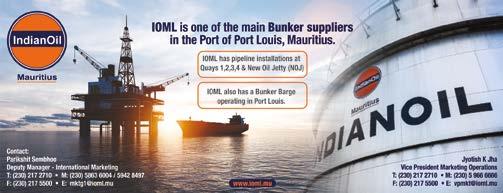
After two years of COVID-related disruptions, the traditional IBIA Asia Gala Dinner will be back in April 2023, taking place in Singapore. Our Regional Manager for Asia, Siti Noraini Zaini, will be able to tell you more in due course. The IBIA Africa Conference 2023 will take place in June, and you can read more about it in the Africa Regional Manager report by Tahra Sergeant.
Finally, as we wrap up our events for 2022, we are pleased to announce that the IBIA Annual Convention 2023 will take place in Dubai in November. We will update you with further details soon.
It makes me a proud as IBIA’s Global Head, Marketing and Events, to announce we have reached another milestone in our history: In 2023, IBIA will celebrate its 30th anniversary! IBIA is thankful to each of you for being a valued part of our Association, and we look forward to marking the occasion at the 30th IBIA Annual Dinner in February 2023!
What began as a small membership organisation with just 10 members has risen to stand tall in the industry with over 400 members in more than 70 countries. I am very proud to say that IBIA has countless achievements and accomplishments to its name thanks to the
combined efforts of the IBIA Secretariat, members of the Board, members of IBIA’s Working Groups and various companies and individuals among our members.
From the events team’s side, we are also grateful to our members who trusted in us with their business. Our success story remains incomplete without the support of our members, sponsors, speakers and delegates as they helped us spread the word to boost our promotional efforts.
I take this occasion to make a personal announcement: I will be on maternity leave for the coming year.
We plan to keep on growing our business and relations with you and continue to provide you nothing less than the best. While I am on maternity leave, this will be in the very capable hands of Tahra Sergeant along with Stefan Tiu, who will be acting as our Marketing and Events Executive. I am certain you all have met Tahra at some point before. It will be a natural transition for her to take over management of all the IBIA events in the coming year and ensure they will be as successful as ever.
You can access all information on our website www.ibia.net.
Follow our social media: https://linkedin.com/ company/ibia.net
InternationalBunker IndustryAssociation/ ibiabunkers
Get in touch with us at ibia@ibia.net
Sofia Konstantopoulou
Global Head of Marketing & Events



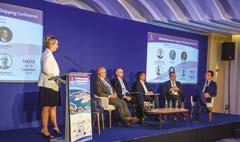
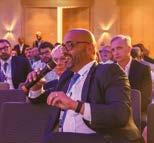
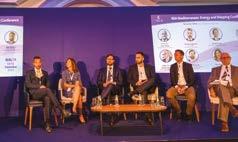
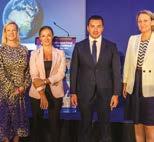


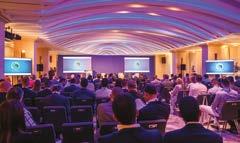


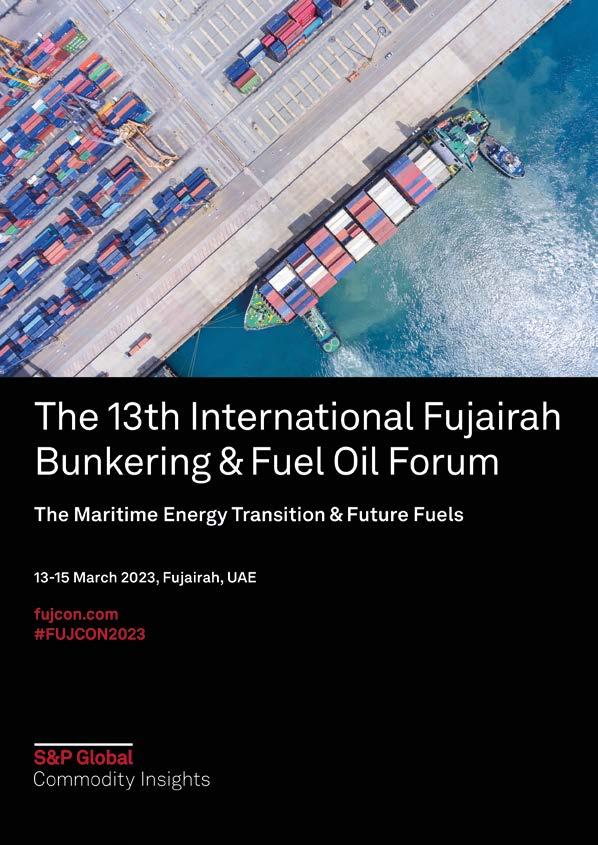
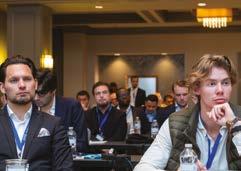
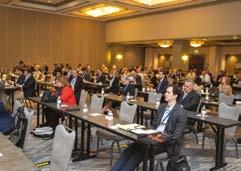







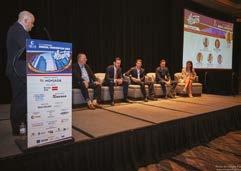
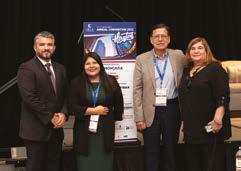





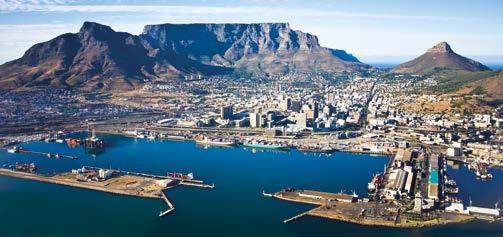
While 2022 has seen a steady membership in Africa, we aim to grow the region’s membership next year
The end of this year is just around the corner. With only a few weeks left of the year, there is so much to recognise as achievements from the past nine months, as well as looking towards a successful 2023.
We have had a steady flow of new members to IBIA in Africa. We welcome our new members to the Association and look forward to meeting face to face in due course. For the members who are leaving us because their core business strategies have changed, meaning they no longer work in the bunker space: You will be missed.
The focus for IBIA Africa in 2023 will be on growing the membership and ensuring that we meet with the industry’s needs in Africa. This will be done through our IBIA Africa Conference and through online member engagement and meetings, where we can have open and frank discussions as to what the needs are for the Africa Bunker industry.
We continue to finalise plans for the 3rd IBIA Africa Conference, which will take place in Ghana, West Africa in June of 2023. We look forward to bringing the Africa shipping and bunker industry together and engaging in a meaningful manner on regional and international topics of interest. Overseeing the IBIA Annual Convention 2022, which was held in Houston, Texas
this November (15 – 17) has been a really exciting and rewarding experience. This was our flagship conference and it was good to see several of our Africa members at the event. We will bring all the learnings from the Convention and ensure that these topics are included in a relevant way in our IBIA Africa Conference Agenda.
Another much-anticipated event for the beginning of 2023 is the IBIA Annual Dinner, hosted in London on 27 February. This will be IBIA’s 30-year anniversary celebration, and held at the Park Plaza Westminster Bridge, in London. We are already more than 60% booked and look forward to hosting a full house of over 1,000 members and their guests. This will be my ninth IBIA Annual Dinner as event producer, and I certainly look forward to what I know will be a very successful evening!!
Should any of our members wish to engage further regarding the above, you are encouraged to contact me directly, particularly should you wish to speak and participate in the IBIA Africa Conference next year.
I would like to take this moment to warmly thank our Africa Membership for your support and continued dialogue during this year and wish you all a healthy and happy festive season.
If you would like to engage with the IBIA Africa team, or become a member of IBIA, explore opportunities to be a speaker, sponsor or find out more about our local activities, engagements and events, please contact me.
Tahra Sergeant, Regional Manager: Africa SA Mobile: +27 (0)79 990 7544

E: tahra.sergeant@ibia.net
S: sergeant.tahra W: ibia.net
IBIA Asia is now planning future activities following October’s busy schedule
After a four-year hiatus, the Singapore International Bunkering Conference (SIBCON) returned to an in-person format with a crowd of more than 1,700 delegates. Needless to say, the conference was a resounding success! Discussions at the preconference symposium and the two-day conference centred mostly around future fuels and digitalisation. IBIA was pleased to be part of it with our Director, Unni Einemo, moderating a panel on ‘Managing Structural and Market Complexities of an Evolving Marine Fuel Industry’.
IBIA was proud to once again be a supporting organisation for SIBCON. Our stall in the SIBCON Exhibition area was very well visited, especially on the final day when we held a happy hour session for all the delegates, generously sponsored by the Methanol Institute. The happy hour provided a great opportunity for the delegates to mingle and catch up with each other.
In conjunction with SIBCON, IBIA also hosted the IBIA Golf Tournament 2022 – the first since 2016! The IBIA Golf Tournament is traditionally held as part of IBIA’s fundraising efforts towards the IBIA Bursary Fund which has benefitted about 20 students since its inception in 2011.
Held at the lush Island Course of the Singapore Island Country Club (SICC), our guest-of-honour, MPA Assistant Chief Executive, Capt. Segar, joined more than 35 golfers on the greens (see photo above), and more joined us for lunch afterwards. We would like to thank all of them for their support and participation in the IBIA Golf Tournament, and in particular Hafnia and Airserve Group, for their kind sponsorships.

You can find some more photos from our activities during SIBCON on the next page. IBIA Asia is currently planning activities for 2023 and will keep Members updated.
IBIA was recently re-appointed to the Technical Committees for Bunkering (Ambient Liquid Fuels) and (Cryogenic and Gaseous Fuels) under the Singapore Chemical Standards Committee, where I will be representing our Association.
The aims of the Technical Committees are generally to develop, review and facilitate the use of the Singapore national standards. I look forward to be part of these committees and contribute where IBIA’s expertise is required.
Siti Noraini Zaini
Regional Manager, IBIA Asia

T: +65 6472 0916
E: siti@ibia.net W: www.ibia.net

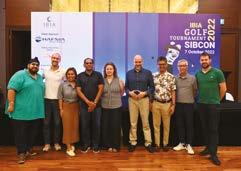






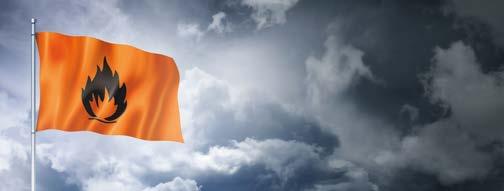
Amendments to SOLAS Chapter II‐2 include detailed flashpoint documentation requirements for suppliers, and for authorities to report off‐specs. Unni Einemo explains what it all means
After years of discussion, the IMO has formally adopted a set of SOLAS amendments designed to prevent the supply of fuels in breach of the minimum 60°C flashpoint limit in SOLAS Chapter II-2. IBIA has worked hard to ensure the amendments are pragmatic and workable. Now we need to ensure these new regulatory elements are properly understood, as there is scope for confusion.
IBIA took part in the 106th session of the IMO’s Maritime Safety Committee (MSC 106, November 2 to 11), including the so-called ‘Drafting Group’ which did a final review of the draft regulatory amendments prior to adoption. During these final discussions about the exact wording, I discovered that what seems perfectly clear and logical to those of us who have been part of the full regulatory drafting process, is not equally clear to those who are not familiar with the thinking behind amendments. That means the amendments could be open to misunderstandings, which is concerning and unhelpful if various parties have different ideas about what the regulation actually means.
The amendments, which add new elements to SOLAS Chapter II-2, are written in a way that pre-supposes knowledge of the entire regulation, such as existing
definitions and other specific parts of the regulation.
Let’s take a look at the substantial amendments.
Amendments to SOLAS Chapter II‐2 Part A: General – Regulation 3 Definitions
The following new paragraphs are added after existing paragraph 58, together with the associated footnotes:
59 Confirmed case (flashpoint) is when a representative sample analysed in accordance with standards acceptable to the Organization* by an accredited laboratory** reports the flash point as measured to be below 60°C.
* ISO 2719:2016- Determination of flash point – PenskyMartens closed cup method, Procedure A (for Distillate Fuels) or Procedure B (for Residual Fuels)
** The laboratory is to be accredited to ISO/IEC 17025:2017 or an equivalent standard for the performance of the given flash point test ISO 2719:2016.
60 Representative sample is a product specimen having its physical and chemical characteristics identical to the average characteristics of the total volume being sampled.
61 Oil fuel is defined in regulation 1 of Annex 1 of the International Convention
for the Prevention of Pollution from Ships, 1973, as modified by the Protocol of 1978 relating thereto.
Part B: Prevention of fire and explosion – Regulation 4 Probability of ignition
The following new sub-paragraphs are added after existing paragraph 2.1.5, together with the associated footnotes:
.6 Ships carrying oil fuel shall prior to bunkering be provided with a declaration signed and certified by the oil fuel supplier’s representative, that the oil fuel to be supplied is in conformity with paragraph 2.1 of this regulation, and the test method used for determining the flashpoint. A bunker delivery note for the oil fuel delivered to the ship shall contain either the flashpoint specified in accordance with standards acceptable to the Organization*, or a statement that the flashpoint has been measured at or above 70ºC**;
* ISO 2719:2016, Determination of flash point – PenskyMartens closed cup method, Procedure A (for Distillate Fuels) or Procedure B (for Residual Fuels)
** This information may be included in the bunker delivery note according MARPOL Annex VI/18
.7 Contracting Governments undertake to ensure that appropriate authorities designated by them inform the Organization for transmission to Contracting Governments and Member States thereof, of all confirmed cases (flashpoint) where oil fuel suppliers have failed to meet the requirements specified in paragraph 2.1 of this regulation; and
.8 Contracting Governments undertake to ensure that appropriate authorities designated by them take action, as appropriate, against oil fuel suppliers that have been found to deliver oil fuel that does not comply with paragraph 2.1 of this regulation.
These SOLAS amendments are expected to enter into force as of 1 January, 2026.
Explainer: New definitions Before looking at the new paragraphs added to Regulation 3, Definitions, let me bring another very important paragraph from Regulation 3 to your attention:
“24 Flashpoint is the temperature in degrees Celsius (closed cup test) at which a product will give off enough flammable vapour to be ignited, as determined by an approved flashpoint apparatus.”
The reference to a closed cup test is essential, as it is also possible to do an open-cup test for flashpoint which will give a higher flashpoint reading than the closed-cup test. The limit for flashpoint for regular oil fuels is 60°C minimum, so it must be understood that only a closedcup test is acceptable.
The new paragraph 59 definition for “Confirmed case (flashpoint)” makes it clear that any test result below 60°C flashpoint will be considered as having failed to meet the minimum limit. The 95% confidence limit as per ISO 4259 will not be taken into account by relevant authorities.
The new paragraph 60 definition for “Representative sample” is generic in nature. It seeks to ensure that the sample is truly representative of “the total volume being sampled”. This could be a sample taken during the bunker delivery, but it could also be a tank sample. The MSC
Correspondence Group on Oil Fuel Safety, which IBIA takes part in, has been asked to develop guidelines for SOLAS sampling procedures. It may be agreed that the existing MARPOL delivered sample could be used, so that a joint MSC-MEPC guideline could offer a way forward, allowing a single sample to be available for authorities to check for compliance with flashpoint and/or sulphur to establish compliance.
The new paragraph 61 definition for “Oil fuel” is an example of how knowledge of other IMO regulations is required to make sense of new ones, in this case of MARPOL Annex I, which defines Oil fuel as “any oil used as fuel in connection with the propulsion and auxiliary machinery of the ship in which such oil is carried.” Oil is defined in MARPOL Annex I as “petroleum in any form including crude oil, fuel oil, sludge, oil refuse and refined products.”
The new sub-paragraph 6 added after existing paragraph 2.1.5 in SOLAS Chapter II-2, Regulation 4, and the associated footnotes, puts several new demands
on bunker suppliers. At present, bunker suppliers are already guaranteeing to provide fuels meeting the flashpoint limit by both statutory and commercial means: statutory by providing a material safety data sheet (MSDS) to the receiving ship, and commercially by selling fuels against ISO 8217 specifications, which include the same flashpoint limits as SOLAS.
The majority view among IMO Member States and shipping organisations with consultative status was that this is not sufficient to prevent supply of fuels below the limit.
This is why there are two new requirements: first, to provide a signed and certified declaration of compliance prior to supply (stating also the test method used to determine flashpoint, which should be ISO 2719:2016), and second, a requirement for documenting flashpoint on the bunker delivery note (BDN).
For a long time, it looked like the regulation would require the flashpoint to be documented regardless of how high it was, but a concerted effort by IBIA, including an IBIA /submission to MSC 105 earlier this year, succeeded in explaining that in

practice, laboratories typically only test to determine if the fuel has a flashpoint above 70°C as that is sufficient to guarantee it is above the 60°C minimum.
Hence, once the amendment enters into force, suppliers will have to provide, on the BDN, either the flashpoint value measured in Celsius (°C), or a statement that flashpoint has been measured at or above 70°C.
This was perplexing to one of the delegates taking part in the Drafting Group at MSC 106. He was a former Chief Engineer and currently a Port State Control Officer, but he was not familiar with the thinking behind requiring either a specific flashpoint value, or a statement about it being measured at or above 70°C. If he found it ambiguous, others could too.
Some important things to note, therefore, for anybody confused about what this actually means:
Firstly, there is no change to the flashpoint limit; it continues to be no less than 60°C for all oil fuels unless specifically provided for use in emergency generators, where oil fuel with a flashpoint of not less than 43°C may be used. ISO 8217 Table 1 (Distillates) has one grade for this purpose, namely DMX, with a minimum flashpoint of 43°C. All other ISO 8217 grades for marine distillates and marine residual fuels specify a 60°C minimum for flashpoint.
Secondly, the closed-cup flashpoint test will provide a specified temperature when an ignition source produces a “flash” in the sample. If this flash occurs at a temperature below 70°C, this must be reported on the BDN. If, however, the sample is heated to 70°C or above without producing a flash, there won’t be an actual measured flashpoint temperature to report, but this is sufficient to meet the requirement for a statement that the flashpoint has been measured at or above 70°C.
Coordination with MARPOL Annex VI Finally, it is worth noting the footnote to this new sub-paragraph 6 in SOLAS Chapter II-2. It says that “This information may be included in the bunker delivery note according MARPOL Annex VI/18”
The 77th session of the IMO’s Marine Environment Protection Committee (MEPC 77), which met in November 2021, considered draft amendments to amend Appendix V of MARPOL Annex VI – Information to be included in the bunker delivery note (Regulation 18.5). The draft wording for the new information to be included in the BDN is: “Flashpoint (°C) or a statement that flashpoint has been measured at or above 70°C”.
This amendment is up for adoption at MEPC 79 (12-16 December, 2022) and is expected to enter into force on 1 May, 2024. In other words, it looks like new
flashpoint documentation requirements for suppliers will come into force under MARPOL Annex VI before the SOLAS Chapter II-2 amendments, which are expected to enter into force as of 1 January, 2026.
I won’t provide any further explanation to the additional sub-paragraphs 7 and 8 to 2.1.5 in SOLAS Chapter II-2, Regulation 4 as these should hopefully be self-explanatory. That’s not to say that enforcement will be even-handed though; as we have already seen with similar requirements in MARPOL Annex VI with regards to reporting confirmed cases where oil fuel suppliers have failed to meet sulphur limits, and for authorities to take “action, as appropriate” against suppliers.
Thankfully, cases of off-spec flashpoint reported on the basis of ship’s samples sent to fuel testing agencies are really rather rare compared to potential sulphur off-specs. Typically, across several fuel testing agencies, less than 1% of distillate fuels and less than 0.5% of heavy fuel oil samples test below the 60°C flashpoint limit, and for the most part only marginally so.

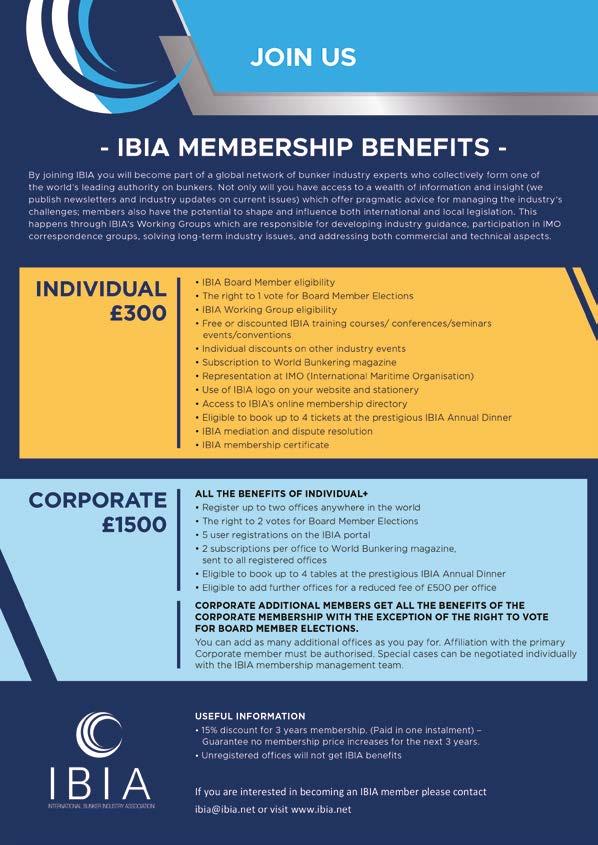

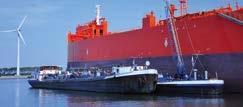
The manual is a unique result of cooperation between IBIA and BIMCO to create insight and practical understanding of bunkering across the shipping sectors. Bunkering operations are routine, critical and high-risk operations which require accurate planning from both the owner and supplier to ensure a safe and successful operation. The publication consists of background information as well as checklists and key notes for the entire process for shipowners, masters and crew on how to prepare, execute and follow up on bunkering, including what to do when it goes wrong.
Totalling 4 chapters and phases of the bunkering process, the manual covers the following topics:
Everything you need know from fuel oil types, safety, and environmental regulations to ISO standards and contractual issues related to bunkering.

An overview of bunker blends before the ship arrives for bunkering followed by a detailed description of the ship’s preparation and planning prior to bunkering. Advice is also given on how to handle a situation if compliant fuel is unavailable in a specific port. Paperwork including the bunker delivery note and certificates of quality are described and recommendations are given that aim to help to use them correctly.
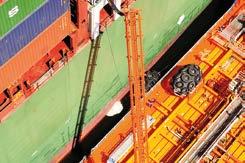
Bunker sampling is one of the most important aspects of bunkering. This chapter covers preparations, practical issues and what to do if something goes wrong. Details of the role each stakeholder ashore and on board undertakes during the process including actions required before, during and after the bunkering.
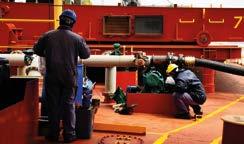
Details on how to create a solid background for calculating the bunker quantity and determine if the ordered bunker stem has been delivered. For ships carrying equipment to undertake onboard testing of marine fuels, testing procedures are referred to and detailed description of how to interpret test results provided. Keeping an accurate and up to date oil record book is, together with the bunker delivery note, important as records for internal and external use for example during port state control.
The book is available to buy from Witherbys on this link: https://shop.witherbys.com/shipmaster-s-bunkering-manual-2022/ IBIA members receive a 20% discount on all publications. Please enter “IBIA” in the “Coupon/Gift Certificate” box to receive your 20% IBIA member discount.
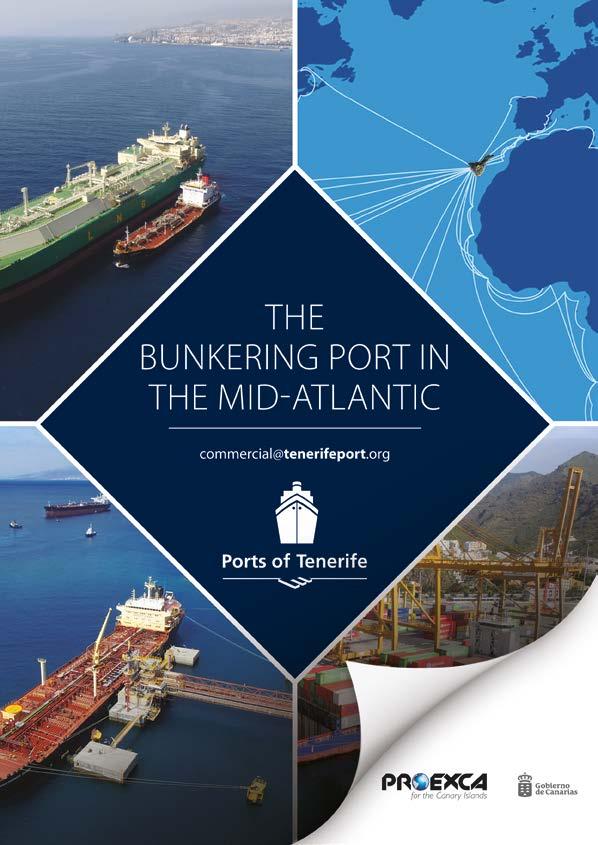
Shipping data specialist VesselsValue says it has expanded its Green data product with the launch of its Carbon Intensity Indicator (CII) and Engine Power Limitation (EPL).
The company says the latest features combine its extensive Shipping data with the IMO framework to calculate the Energy Efficiency score for an individual vessel, whether existing or a newbuild. It is available across bulkers, tankers, containers and reefers, with CII additionally covering cruise, gas, vehicle carriers, small dry and small tankers.
The new CII feature is designed to allow users to view current and historical estimated CII ratings for individual vessels and fleets quickly and easily. Users can access the following data for individual vessels, year to date and previous three years: CII rating (bands A–E), Attained and Required Annual Efficiency Ratio (AER), CO2 emitted, Distance travelled, Time underway and Fuel consumed.
In addition, relating to EEDI/EEXI, users of the platform can now estimate the limited engine power and reduced reference speed to bring a non-compliant vessel into EEXI compliance.
VesselsValue’s mission is to bring transparency and objectivity to the Aviation and Maritime markets through a wide range of services. Data and market insights are available through online access, reports, API feeds and exports,
including automated values, transactions and fleet data, as well as AIS and ADS-B derived mapping & tracking, demand, utilisation and trade and people flows.
Carbon reduction platform launched Communication service and app provider Signol has partnered with major integrated shipping services company Clarksons to launch its new carbon platform intended to “immediately reduce emissions in the maritime industry”.

Signol says it uses existing maritime data, such as noon reports, to nudge mariners into executing more efficient behaviours
in the operation of their ship - lowering fuel consumption, operating costs and emissions almost immediately.
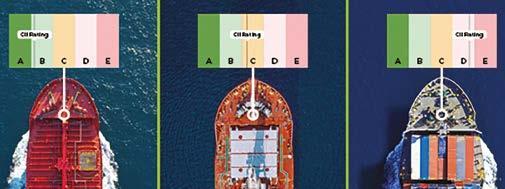
Engine support services expanded Launching a new range of online service, TotalEnergies lubricant division Lubmarine notes that marine engines are the most valuable assets of any vessel. It says: “With new regulations, engine designs and a wide variety of fuels, lubrication and maintenance of these engines is becoming ever more complex and challenging.”
The company says its digital services offer onboard vessel equipment and engine performance insights, engineer support, as well as a dedicated portal to access vessel and business data. It says in a statement: “The platform is easy-to-use and provides intelligent online insights that can be used both by onshore staff and offshore crew at the same time.”
Lubmarine has launched four new products: LubPortal, LubInsight, LubDiag and LubSkills.
Lubmarine's general manager Arnaud Guichard says: “We recognize the importance of data and we have engineered a range of digital solutions on the basis that companies need to streamline daily operations so vessel operators can focus on what matters most at sea; delivering cargo safely, efficiently and on time.”
The technology group Wärtsilä says its new Wärtsilä 25 medium-speed 4- stroke engine’s modularity offers shipowners and operators maximised flexibility, while the engine’s efficiency and fuel economy deliver minimised emissions.

The engine is already capable of operating on diesel, LNG, or on either gas or liquid carbon-neutral biofuels and Wartsila says it can easily be upgraded to operate with future carbon-free fuels as they become available.
The flexibility of having different valve timing options is a key enabler for future fuels and emissions optimisation.
The Wärtsilä 25 is intended to be the first Wärtsilä engine to run on Ammonia as a fuel. This development is currently underway with a technology concept readiness slated for 2023, followed by planned product release soon thereafter.
When operating with natural gas, the engine is IMO Tier III compliant, as it also is with diesel when integrated with a Wärtsilä NOx Reducer (NOR) emissions abatement system. Furthermore, it is said to enable economically viable compliance with regulations such as the IMO’s CII and EEXI protocols that enter into force in 2023.
Meanwhile, classification society Bureau Veritas (BV) has awarded an Approval in Principle to Gas and Heat (GH), a company specialising in the design, construction and integration of liquefied gas handling systems both for marine and onshore installations, for its flexible solution for the transport of LNG and ammonia.
BV notes: “Through a thorough study, GH supported by the BV team demonstrated that IMO Type C cargo/fuel tanks made of austenitic steel with a special grade can transport both LNG and ammonia for seagoing and inland navigation.”
It adds: “While LNG is expected to be widely used this decade, alternative fuels are under scrutiny to ensure their safe and sustainable use in the future. At the same time, shipowners are becoming more and more focused on multifuel supply systems able to handle two or more different fuels. As part of their ambitions to develop innovative solutions to help the industry anticipate the next wave of alternative fuels, GH embarked on a study to identify possible options and develop solutions.”
GH has used austenitic steel with a special grade for LNG containment since its approval by Bureau Veritas in June 2022, as an “alternative material” with respect to the
IGC and IGF Codes. The compatibility of this material with ammonia has been verified by a specific Stress Corrosion Cracking test performed by GH and then approved by Bureau Veritas in August 2022.
Another innovative development increasing flexibility when it comes to fuel choice is a new design that will allow shipowners to convert steam powered vessels to hybrid dual-fuelled propulsion. Lloyd’s Register (LR) has awarded Approval in Principle to Empresa Naviera Elcano for their patented steam-to-hybrid conversion design for the transformation of steam turbine LNG carriers to a dual-fuelled propulsion system.
The transformation consists of a modification to the propulsion and electrical power generation system, upgrading the vessel from steam powered to a hybrid system with a steam turbine and dual fuel generator. The dual fuel generator will supply electrical power to the ship’s switchboard with electric propulsion motor/s coupled to the ship’s propulsion gear box/shaft. The hybrid system also includes devices that can recover energy from the dual fuel generator exhaust gases and engine cooling systems, which will be integrated into the existing steam plant systems.
The conversion could benefit the onein-three LNG carriers that rely on steam propulsion and are currently at risk of being non-compliant with the IMO’s EEXI and CII regulations, without the need to scrap any part of the original steam propulsion system.
Elcano’s solution will ensure the steam turbine LNG fleet will meet EEXI MARPOL regulations by substantially reducing greenhouse gas (GHG) emissions on converted vessels, prioritising both energy security and climate alignment for the maritime industry. The company says that emission reduction and energy savings will increase dramatically if a vessels conversion includes the retrofitting of a reliquefication plant driven by a dual fuel generator. This will increase efficiency by minimising the vessels use of a steam dump system.
With many uncertainties surrounding the choice of alternative fuels to achieve decarbonisation, projects are underway to ensure expensive marine engines have the flexibility to use a range of fuelsThe new Wärtsilä 25 medium-speed 4-stroke engine, ©Wartsila
ICS proposes global bunkers tax Shipowners body International Chamber of Shipping (ICS) has proposed a global tax on marine fuel which would be used to reward users of alternative fuels which, it says, currently cost at least two or three times more than conventional marine fuel.
The reward rate would be calculated based on CO2 emissions prevented and funded via a mandatory flat rate contribution from ships per tonne of CO2 emitted. The industry body said that the ‘fund and reward’ system could be established by 2024, if governments can agree on the regulatory framework at the IMO.
A detailed impact assessment undertaken for ICS by Clarksons Research identified that a financial contribution of up to approximately US$100 per tonne of CO2 emitted would not cause disproportionately negative impacts on the economies of states. However, ICS says that it believes contributions could initially be set much lower and then be subject to a 5-year review as increasing quantities of new fuels become available.
ICS says its proposal combines elements of various recent GHG reduction proposals from a number of governments, plus a flat rate contribution system previously proposed by ICS and INTERCARGO, and ideas recently put forward for a global IMO measure by the EU 27.

A detailed impact assessment undertaken for ICS by Clarksons Research has identified that a financial contribution of up to approximately US$100 per tonne of CO2 emitted would not cause
disproportionately negative impacts on the economies of states. However, ICS believes that contributions could initially be set much lower and then be subject to a 5-year review as increasing quantities of new fuels become available.
ICS’s chairman, Emanuele Grimaldi, added: “With the ICS fund and reward proposal, IMO member states have a new but very short window of opportunity to put in place a global economic measure which can kick start the development and production of alternative fuels for shipping. To achieve net zero mid-century, these new fuels must start to become available in significant quantities on a commercial basis no later than about 2030.”
ICS proposes that contributions from the global fleet be gathered in an “International Maritime Sustainability Fund”. Such a fund, the ICS asserts, “could raise billions of dollars annually, which would then be committed both to narrowing the price gap, globally, between existing high carbon marine fuels and alternative fuels, as well as supporting much needed investment in developing nations for the production of new marine fuels and bunkering infrastructure”. ICS says the architecture for the fund is based on the industry’s previous proposals for an IMO R&D Fund, which did not achieve sufficient support at IMO.
The fund would reward ships according to annual reporting of the CO2 emissions prevented by the use of “eligible alternative fuels”. As an example, ICS says that a ship powered by ammonia (among many other alternative fuels including methanol,
hydrogen, sustainable biofuels and synthetic fuels) could receive a cost saving of more than US$1.5 million.
ICS’s secretary general, Guy Platten, comments: “We must narrow the significant price gap of new, very expensive, alternative fuels to accelerate their production and take-up, so that we reach a take-off point by 2030 on our pathway to net zero by 2050. But it is crucial that our industry also supports maritime greenhouse gas reduction efforts in developing countries.”
Study shows shipping’s air pollution has significant cooling effect on climate
New analysis of shipping emissions has found that air pollution has a larger effect on climate than previously thought, according to a group of researchers based at Oxford University’s Climate Processes Group. The UK-based researchers analysed satellite observations of clouds polluted by shipping as a model system to study the impacts of human aerosol emissions. The study used a global database of ship routes containing the locations of almost all ships at a given time and analysed more than two million ship paths over six years.
Aerosol emissions, not to be confused with CO2 emissions, are fine particulates created from combustion and fires. They have a negative impact on air quality, which is why shipping is subject to restrictions on emission of sulphur and nitrous oxides.
The results of the new analysis, recently published in the journal Nature, showed that clouds may react more strongly to
air pollution than previously thought, becoming brighter and therefore having a stronger cooling effect. The group cautions: “The effects of policies to reduce air pollution should be carefully considered when forecasting long-term climate change.”
Human aerosol emissions have a cooling effect on the planet, because they can make clouds brighter by providing extra condensation nuclei on which cloud droplets form. Brighter clouds reflect more of the sunlight that strikes them, deflecting it from the earth’s surface. However, it is currently unclear how large this cooling effect is, particularly if the cloud brightness change cannot be seen in satellite images. This could be when the emissions are diffuse, such as from a city’s traffic, or when there are winds that disperse them. The cooling effect offsets some of the warming effect of greenhouse gasses, and provides the largest uncertainty in human perturbations to the climate system.
To investigate this, the research team analysed data on ship emissions as a model system for quantifying the climatic effect of human aerosol emissions in general. Sometimes, when a ship passes underneath a cloud, its aerosol emissions brighten the cloud in a long line, similar to a contrail. These so-called ship tracks have been studied previously, however the vast majority of ships leave no visible tracks. This was the first study to provide a quantitative measure of the impact of
invisible ship tracks on cloud properties, and thus their cooling effect.
The study found that invisible shipping tracks had a clear impact on the properties of clouds they polluted.
Surprisingly, according to the researchers, the specific effects were different to those of visible shipping tracks.
Invisible ship tracks showed a smaller increase (roughly 50% less) in the number of droplets in the clouds, but the amount of water increased more, compared to the effect of visible tracks. This implies that for a given increase in droplets, the increase in water is larger than thought, equating to a greater cooling effect.
The same may be true for aerosol emissions more generally – clouds may react more strongly to air pollution than previously thought, getting brighter and having a stronger cooling effect.
According to the research team, the findings indicate that human health policies to reduce air pollution must be carefully considered when forecasting future climate change scenarios. In a recent study, the Climate Processes Group also found that ship tracks reduced by around 25% almost immediately after the IMO introduced strict new sulphur emission regulations in 2020 to reduce air pollution caused by global shipping.
As negotiations on the inclusion of shipping in the EU Emissions Trading Scheme (ETS) entered the final stretch in November, European shipowners (ECSA), ports and port operators, and other European maritime clusters reiterated their call to regulators to earmark ETS revenues from shipping back to the maritime sector.
The earmarking of revenues through a framework that is fit for purpose is essential to reach the ambitious targets set by the European Green Deal and Fit for 55 package, they say.
Earmarking would provide essential support to the maritime sector as it strives to decarbonise, according to ECSA’s Secretary General Sotiris Raptis. He says:
“Bridging the price gap between clean and conventional fuels and funding innovation and deployment of clean energy technology will be critical for the decarbonisation of shipping.”
Meanwhile, European ports body FEPORT has issued a statement supporting the EU's Fit for 55 proposals “as key building blocks to allow the decarbonization of the EU economy towards climate neutrality by 2050, including those proposals aimed at the greening of maritime shipping such as FuelEU Maritime and the EU ETS revision”.
However, it says that it is concerned that “the geographical scope of these pieces of legislation could harm the competitive position of EU seaport terminals, as their extra-EU application means that shipping companies can avoid their financial implications by adding a call to a non-EU port”. It adds that, according to academic studies, evasive port calls can already happen at very low carbon prices of €6/ tonne of CO2 in the case of Algeciras, Spain, and €25/tonne in the case of Piraeus.
FEPORT says it welcomes the European Parliament’s and the Council’s proposed measures to address this topic in the framework of the 'trialogue' negotiations on FuelEU Maritime and EU ETS.
BV class for 'well-to-wake' approach French classification society Bureau Veritas has launched a detailed outlook on future maritime fuels in a new white paper, which calls for a 'well-to-wake' (WtW) approach to assessing the climate impact and sustainability of alternative fuels.
This is one of the key conclusions of the white paper, which evaluates alternative fuels such as methanol, LNG, biofuels, hydrogen and ammonia, outlining their respective characteristics, advantages, challenges, availability, safety, and greenhouse gas (GHG) emissions.
A well-to-wake approach accounts for all GHG emissions released from the extraction or production phase, the distribution of the fuel, through to the final use onboard vessels, as opposed to just the emissions resulting from combustion on board.

The white paper calls for a sustainable fuel production pathway for alternative fuels, highlighting the fact that even carbonfree fuels may have a carbon-intensive supply chain that means they could generate higher WtW emissions than the fossil fuels they intend to replace. This positions e-fuels, which are produced from renewable energy, as well as sustainably sourced biofuels, as some of the most promising options to decarbonise shipping.
Paul Delouche, strategy director at Bureau Veritas and lead author of the report, said: “Assessing alternative fuel options must be done from a well-to-wake basis to achieve true decarbonisation in the shipping industry. Only through a complete lifecycle analysis can the environmental impact of fuels be properly evaluated. Understanding how these fuels are produced and transported is paramount.”
The Global Industry Alliance to Support Low Carbon Shipping (Low Carbon GIA) has published A Practical Guide to the Selection of Energy Efficiency Technologies for Ships as part of the IMO-Norway GreenVoyage2050 Project. Together with its accompanying Excel tool, the Guide aims to support shipowners looking into retrofits, with helpful guidance on considerations and operational practices that should be taken into account when selecting relevant technologies.
“Transparency of performance is a key barrier to the uptake of Energy Efficiency Technologies for ships – or EETs. We hope that the publication of this Guide and its accompanying tool, will support shipowners and operators, particularly those with limited in-house technical departments, to assess the energy saving potential of EETs and enable a more informed comparison between different technologies,” said David Connolly, Chief Technologist at Silverstream Technologies and Chair of the Low Carbon GIA Energy Efficiency Technologies and Operational Best Practices work stream.
The guide aims to provide a “simple yet flexible methodology for shortlisting technologies, based on a set of eight evaluation criteria – similarity, plausibility,
accuracy, overall and specific volume of orders, repeat orders, consistency and compatibility”.
AP Moller-Maersk (Maersk) and the Spanish government have signed a General Protocol for Collaboration to explore the opportunities for large-scale green fuels production in Spain. If implemented in full, the collaboration could deliver up to 2 million tonnes of green fuels per year.
The project aims to explore the feasibility on how to cover the full value chain from renewable energy sources to bunkering of vessels.
“We are living in a climate emergency, and we need to rapidly accelerate the availability of green future fuels. We are very pleased to explore green fuel opportunities with the Spanish Government, as the country holds key characteristics to help solve this challenge with its great hydrogen ambitions and aspiring sustainability goals. At the same time, Spain encompasses significant renewable resources and is placed along key shipping routes,” says Maersk CEO Soren Skou,
The Development Bank of Japan Inc. (DBJ) and ClassNK have established the Zero-Emission Accelerating Ship Finance (Program) to support the maritime industry's transition toward decarbonization.
As tightened environmental regulations and the future introduction of carbon pricing are expected in the maritime industry, DBJ and ClassNK says they have anticipated an increasing need for a system to reasonably evaluate the asset value of environmentally friendly ships and to combine them with investment and financing, and brought together each knowledge and expertise.
The programme involves ClassNK evaluating ships based on a comprehensive scoring model jointly developed with DBJ from the perspective of decarbonisation, environmentally friendly performance and innovation, while DBJ provides investment and financing.
The first vessel to be financed in this way is a dual-fuelled large LPG carrier built at Sakaide Works of Kawasaki Heavy Industries and delivered to Kumiai, a Japanese shipowner based in Singapore.
The International Chamber of Shipping (ICS) has published what it says is the industry’s first definitive guide to the IMO GHG regulations, helping decision makers to chart their way through the major technical and operational changes they face in achieving the CO2 reduction targets for 2030 agreed by the UN International Maritime Organization (IMO).
According to ICS, Reducing Greenhouse Gas Emissions: A Guide to IMO Regulatory Compliance guides readers through the first step on the route to decarbonisation: preparing for compliance with the IMO regulatory framework, and in particular, the 2021 amendments to MARPOL Annex VI. It is intended to be the first of a developing portfolio of guidance and support for the industry.
ICS Secretary General Guy Platten says: “The number one priority facing owners and operators is reducing emissions, while maintaining safe and efficient operations. It is essential that decision makers have access to the best expert advice possible on the implications of new legislation. Unlike much that can be found on this topic, the information provided in the ICS Guide highlights and emphasises how these changes will directly affect shipping, and the decisions that owners and operators must make today.”
The publication covers reductions of carbon intensity through the use of the Energy Efficiency Design Index for new ships (EEDI) and the Energy Efficiency Existing Ship Index (EEXI), submission of the Ship Energy Efficiency Management Plans (SEEMP) for external audit and statutory certification and use of operational Carbon Intensity Indicators (CIIs) and the collection and submission of operational data, with ships being designated annually with an ‘A to E’ rating. It also covers modification of existing ships, including information for naval architects.
with decarbonisation now clearly an urgent issue - in some quarters, at least - all three of the titular ARA ports have launched bids to turn themselves into major green hydrogen hubs in the near future. Whatever form your hydrogenbased fuelling needs take, Antwerp, Rotterdam and Amsterdam clearly all want you to fulfil them there when the time comes, thank you very much.
In the case of Antwerp, the port in the least enviable position of the three in terms of practicalities, the move follows a proposed revision of Belgium’s federal hydrogen strategy, part of the country’s climate neutrality goals, which will aim to see it become “the hydrogen hub of Western Europe” - albeit one largely reliant on bringing in large quantities of green hydrogen products as imports as Belgium doesn’t have the renewable energy capacity or space to produce the gas in volume itself. Port of Antwerp-Bruges has joined an import coalition of DEME, Engie, Exmar, Fluxys and WaterstofNet with an aim to establishing supply chains as well as building terminal capacity and gas handling infrastructure at the port. Zeebrugge has suitable space for local hydrogen production via existing wind farms and natural gas infrastructure, with a plant under construction by Fluxysand Eoly, while Antwerp is due to see one built by US-based Plug.
Jacques Vandermeiren, the port’s CEO, said: “Together with our partners in organisations such as the Hydrogen Import Coalition, and the major players on our port platform, we are investing in infrastructure and projects to accelerate the import, transport and production of green hydrogen. Cooperation with and the
appropriate support from the government is key to this. I therefore sincerely welcome this revised strategy that provides concrete direction, recognises imports as a pillar of our energy and resource supply and demonstrates our commitment to working with industry on the development of solutions to potential challenges that may lie in our path.”
In the port of Amsterdam, planning is underway for a new 500MW green hydrogen plant being built by HyCC which the port says should be operational in 2027. The plant will produce hydrogen for various sectors including transport fuel.

Dorine Bosman, the port’s chief investment officer, said: “500 megawatts of green hydrogen production is an enormous asset for the regional hydrogen economy. With this project, the Port of Amsterdam strengthens its position as a frontrunner in the transition to a sustainable, circular economy.”
The same company is already working on a much smaller hydrogen plant in IJmuiden, where the first hydrogen bunkering license in the Netherlands was issued in August this year. The license is on a very limited scale - allowing Windcat Workboats to bunker the hydrogenpowered Hydrocat 48 offshore support vessel, which ferries crew to and from offshore wind farms, by truck. Nonetheless, it’s an important first step, as Windcat Workboats MD Willem van der Wel was keen to point out.
“This license represents a major step in the possibility to use hydrogen as a fuel for vessels and increasing the sustainability of the sector,” he said. “As
bunkering hydrogen for shipping is a new development, the licensing process was quite complex. With the first license now approved we expect the use of hydrogen as a green fuel to accelerate.”
In October, the Netherlands as a whole became the first country in Europe to set up a Guarantees of Origin for green hydrogen - guarantees that a given cargo of hydrogen has indeed been produced sustainably. The associated system was run through a pilot scheme by hydrogen exchange initiative HyXchange in cooperation with Vertogas, the certifying body for biogas, now also for green hydrogen. A total of eighteen market parties participated in the test. HyXchange aims to rapidly expand certificate and hydrogen trading, aimed at facilitating trade between European countries and hydrogen imports from countries outside the EU. The guarantees can also be converted into renewable fuel units for traffic and transport. The system is Dutchonly, but an EUwide one is expected to follow suit.
And as with conventional fuels, it’s Rotterdam that looks set to dominate the local market for hydrogen. The port expects to see supplies of hydrogen fuels through the port for all sectors - not just bunkeringhit 4.6 million tonnes annually by 2030.
As well as its own local production, Rotterdam this October inked a deal with Spain’s Cepsa to set up a green hydrogen transport chain between Algeciras and the Dutch hub. Cepsa plans to export hydrogen as methanol or ammonia to Rotterdam produced via its vast renewable “Energy Parks” in Andalusia for distribution across Northern Europe.

Allard Castelein, CEO Port of Rotterdam Authority, said: “Northwest Europe uses far more energy than it can produce in a sustainable way. We are therefore setting up multiple trade lanes for green hydrogen, together with exporting countries and private businesses all over the world. We expect that in 2050 some 20 Mton of hydrogen will flow through the port, of which only 2 Mton will be produced locally.”
“Southern Spain with its abundant space, sun, wind and ports is a logical location to produce green hydrogen for both local use and export. Setting up this trade lane between Algeciras and Rotterdam is a substantial contribution to Europe’s ambition to reduce CO2-emissions as well as increase Europe’s energy independency and stimulate our economies.”
In July, a cluster of Dutch companies inked an agreement looking at the feasibility of setting up another hydrogen supply chain between Sines in Portugal and Rotterdam, with the intention to begin shipments by 2027 - initially at level of 100 tonnes of LH2 per day but scaling up over time. Shell, meanwhile, is building a 200MW electrolyser on the Tweede Maasvlakte to produce up 60 tonnes of green hydrogen per day. This LH2 won’t be intended for fuel use, though; it’s intended to replace grey hydrogen in Shell’s refinery - which produces fuel products.
Developing non-fossil fuel market and infrastructure should be vital in the long run under EU maritime environmental planning - but the FuelEU Maritime policy, which sets out mandatory green fuels and decarbonisation targets for shipping, passed through the European Parliament in October only in limp form. Many MEPs, NGOs - and industrial players - say it doesn’t go nearly far enough and are pushing for the mandates to be raised, while the European Economic and Social Committee has emphasised that the directive has to take IMO alignment into account and recognises that the longer-term mass availability of renewable fuels depends largely on technology and processes that haven’t yet been built to scale, so the mandates are a “target-shooting” exercise.
Under the FuelEU Maritime rules, from the start of 2025, there’ll be a requirement to use at least 2% renewable and lowcarbon fuels, taking well-to-wake (from production through to final consumption) GHG emissions into account, rising to 80% by 2050, with potentially hefty penalties for non-compliance. It will apply to ships above 5,000 gt, either individual ships or a pool of ships, travelling to or from EU ports (with some allowance for accounting for greater reductions and rolling over excess). In addition, shore power will be mandatory for passenger ships and container vessels from the start of 2030 at EU ports, with exemptions for stays less than two hours. Specifics of record-keeping, monitoring, and enforcement are still to be fully hashed out, along with the division of responsibility between owner and charterer, the role of LNG as a transition fuel, the effects of cost and competition, but are currently planned to consist of an annual submission to a central database along with current MRV data, with compliance certificates or penalties issued afterwards.
The reduction targets are the first point of criticism levelled at the regulation, with MEPs and NGOs calling for a much higher 10% reduction target by 2030 in line with the aim of limiting warming to 1.5 degrees, and a 100% reductions target by 2050, in line with the overall EU goal of net zero by that point. A joint opinion issued by MEPs Jutta Paulus and Ciarán Cuffe described an 80% target from that perspective as “incomprehensible”, and the higher targets have the support of some member states, while the current ones “would also incentivise a switch to fossil LNG, increasing our dependence on potentially unreliable imports into the next decade” - though others have pointed out that in the longterm it probably spells the end for fossil LNG use in shipping as in well-to-wake terms it’s not a fuel that performs especially well.
The MEPs and a group of 50 industry players and NGOs, including Siemens Energy and Viking Cruises, want to see higher targets for RLF adoption: 6% by 2035 in line with the EU’s energy committee targets in other sectors, if not 12% in line with its environment committee’s recommendation. “Higher sub-targets will encourage market
development and deployment of the most sustainable, innovative fuel technologies with the greatest growth potential to meet the sector’s future needs,” they point out. “This is also important from a strategic autonomy perspective, giving first movers’ advantage to the EU hydrogen economy.”
Campaign group Transport & Environment echoed this. Delphine Gozillon, sustainable shipping officer at T&E, said: “This is the beginning of the end for fossil fuels in Europe’s shipping industry. The green shipping fuel mandate will kickstart the production of hydrogen-based fuels by providing investment security for fuel producers. But 2% will not be enough if we are to stick to 1.5 degrees. The EU must build on this and go bolder. There is a clear will to clean up the shipping industry. This is just the start.”
The exemptions, though, have drawn the most ire. FuelEU Maritime only covers ships over 5,000 gt, which puts it out of step with the EU’s own ETS position agreed earlier in the year, covering ships from 400 gt upwards from 2027. The rule also bizarrely exempts shipowners with three ships or less, around 60% of the vessel traffic the regulation would otherwise apply to, as well as the usual exemptions for naval and fishing vessels. The shore power requirement being limited to the comparatively few TEN-T ports - while having obvious practical considerations to take into account, and while shore power is increasingly being added anyway - also reduces its likely effect.
Given the clashes with the ETS rules, it seems entirely possible that the current exemption for ships below 5,000 gt will be modified before the regulation is finalised, or else the tonnage limit will be lowered in 2027; owners of vessels between those two sizes should probably prepare for that eventuality. Shore power is coming regardless, and mandating its use for container vessels at Europe’s biggest box ports seems a sufficiently large impact to be worthwhile. Questions over verification and certification will be resolved.
New regulations of any type always have them, and eventually things shake out one way or another.

Off-specification and non-compliant fuels, totalling more than a million tonnes a year, can cost ship operators as much as $50,000 per incident according to a new report.
UK based classification society Lloyd’s Register (LR), in collaboration with marine innovation consultancy Thetius, has published a new report into the market, technology, and regulatory trends of fuel oil bunkering as the industry navigates its way through the decarbonisation and digitalisation challenges of the 21st century.
The report, titled Testing Times – The vital role of ship fuel oil testing and quantity verification in an uncertain era estimates that in excess of one million tonnes of off-specification or non-compliant fuels are detected each year, costing ship operators between $27,000-$50,000 per incident. It says operators require reliable support in bunkering disputes and points to the need for independent testing and verification
Asserting that ship operators need dependable support in bunkering disputes along with independent testing and verification, the report says the introduction of biofuel oils, growing prevalence of bunker licensing schemes along with upcoming changes to ISO standards for marine grade fuels “make it more vital than ever that ship operators receive the correct advice and oversight on bunker procurement and refuelling operations”.
The report also emphasises the number of contributing factors that have made the market prone to serious issues, including the Russia/Ukraine crisis, fraud and corruption, lack of supply chain transparency and climate change.
Matthew Kenney, Director of Research and Consulting at Thetius said: “The evidence gathered in this report paints a worrying picture for ship operators who
are facing increasing cost and risk from contaminated fuels while tackling a myriad of other challenges. Significant gaps remain where opportunities for poor quality and off-quantity bunker deliveries can gain and maintain a foothold.”
Global marine fuel supplier and reseller Peninsula, has started physical operations in the Port of Fujairah.
The company says that its “strong track record” as a reseller in Fujairah, will now be combined with its global physical supply expertise to help further cement its position in and around the Arabian Sea and Indian Ocean.
According to a company statement, the opening of a physical supply operation in Fujairah is the next step in Peninsula’s expansion from the group’s Mediterranean hub.
Peninsula is starting operations with its newly-built, 8,000 DWT tanker Hercules Star A second vessel is to join her shortly
Peninsula’s 22,000 DWT product tanker and supply vessel, Splendour, was deployed to Mauritius earlier in the year and continues to provide “comprehensive marine fuel solutions in the southern Indian Ocean” the company added.
In addition to the Port of Fujairah physical operation, Peninsula has opened a commercial office in Dubai.
ZeroNorth buys Prosmar Bunkering Technology company ZeroNorth has acquired Prosmar Bunkering, an online platform supporting the bunker fuel market. According to ZeroNorth, the acquisition will aim to accelerate digitalisation and transparency in the bunker industry and further support the decarbonisation transition within the marine value chain.
The deal sees ZeroNorth acquire Prosmar’s Bunker Dashboard solution and Bunker Pricer module, which will operate under the name Prosmar Bunkering AS. Prosmar’s two other services, Prosmar Risk and Prosmar Price Matrix, which offer freight risk management services, are not included as part of the deal with ZeroNorth.
Prosmar Bunkering will operate as an independent, stand-alone business, with the same management team currently running the company.
Pakistan-based Orion Bunkers Limited has restructured to become Orion Bunkers DMCC. The company, which has been refuelling vessels at Karachi and Bin Qasim since 2004, remains under same management.
Orion director Zishan Arshad told World Bunkering: “We changed the entity to get more exposure in industry and to strengthen business relations, as Pakistan's top physical bunker supplier in terms of volume and growth.”
He added: “Currently, we are operating with three barges for VLSFO and one barge for LSMGO. This is the biggest fleet any supplier has in our ports. We are offering our products based on ISO 8217:2010 standards where grades are RMG 180 and LSMGO DMA. All our deliveries are subject to BIMCO 2018 terms.”
Arshad explained: “We started VLSFO deliveries from the beginning of 2022, from there we never looked back and kept growing month on month basis. VLSFO production has started after delay of two years. However only one refinery in Pakistan is currently producing VLSFO, with output of about 3,000 to 4,000 tonnes a month. Meanwhile demand is three times more than that.”
One million tonnes of bunkers “are off spec”
Given the tightness of Australia’s Covid blocks on travel, the return of cruise traffic across the 2022-23 summer season is a huge boost for the country’s bunker suppliers. Volumes were reportedly down between 30-50% in major ports last year with the continued shuttering of international and inter-state tourism. It’s no surprise, then, that the reopening would be greeted with considerable fanfare.
Speaking at the first cruise ship call of the year at the end of May, NSW Port Authority CEO Captain Philip Holliday said expectations for the season were “far closer to pre-pandemic figures than expected so it is a remarkable bounce back in the cruising market, particularly domestic cruises, and demonstrates Australians are keen to get back out on the water for their next holiday.”
Peak season, between December and April, is expected to see a surge in vessel traffic, with over 300 calls scheduled for NSW’s ports in total, bringing up to a million passengers, not to mention a bunch of empty bunker tanks.
NSW Transport Minister David Elliott said: “Cruise is an economic powerhouse because its impacts are felt from the farm gate, through our freight and supply chains all the way to our tourism destinations – it generates jobs far beyond the ship, boosts regional economies and supports farming communities. Prior to the pandemic, the
cruise industry contributed an estimated $3.3 billion total expenditure to the NSW economy and contributed more than 11,000 jobs to the whole of NSW in 2018-19.”
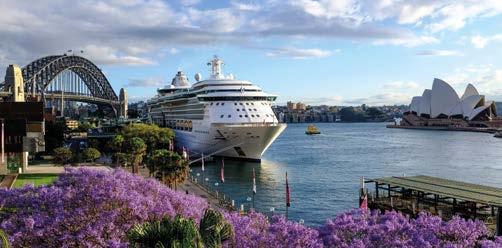
At the same time, NSW’s port authority has announced the installation of AU$60m shore power across five berths in Sydney’s Bays Port precinct. Four will supply bulk ships at Glebe Island, one will supply White Bay Cruise Terminal. The power provided will be 100% renewable and the connections should be in place by 2024. There has been considerable local pressure on the port authority to reduce cruise ship emissions at berth, so the move is likely to be a welcome one.
In a move affecting one of the other key Australian bunker markets, a group of mining companies and shipowners have signed an agreement looking to set up a green corridor on the iron ore trade to East Asia. The consortium is led by the Global Maritime Forum and consists of BHP, Rio Tinto, Oldendorff Carriers and Star Bulk Carriers Corp. The corridor, if set up, is likely to be based on green ammonia use given the level of planned production of this fuel in western Australia and existing interest in it as a fuel from those involved. The consortium will jointly assess green ammonia supply, bunkering and first mover support mechanisms needed to make the corridor feasible.
GMF CEO Johannah Christensen said: “Zero-greenhouse gas emission pathways require the creation of a parallel value chain that involves new ways of working, new contractual relationships, and drives the development of decarbonised fuel production and infrastructure. This new iron ore green corridor collaboration is an important step towards enabling zero greenhouse gas emission shipping from both the supply and demand side.”
Rio Tinto’s Laure Baratgin added: “As a leading charterer, we recognise we have an important role to play in the decarbonisation of our own shipping and the broader industry. This collaboration is another important step towards accelerating the delivery of our climate commitments on shipping, as part of Rio Tinto’s broader goal of net zero emissions by 2050 and a 50% reduction by 2030, and supports efforts in providing our customers and partners with sustainable value-chain solutions.”
No timetable was announced for the completion of the initial feasibility assessment, much less any kind of likely timescale on which bulkers on those trades might switch fuels - as you’d expect - but with a hefty local investment in green hydrogen production it would be surprising if this wasn’t something that happened sooner or later.
There’s been a flurry of activity across the region in recent months, as existing bunker suppliers expand their offerings, both in Fujairah and elsewhere, and newcomers enter the market.
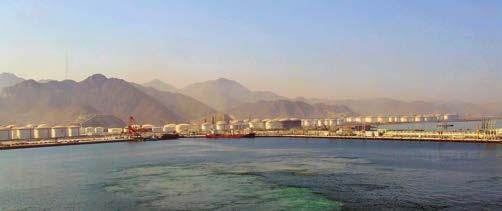
Peninsula has joined the ranks of international suppliers offering physical supply at Fujairah, announcing in September that it would have two vessels - a newbuild tanker and a second ship moved from Mauritius - serving the port, alongside a new commercial office in Dubai. The company had previously been offering reseller services across the region, but this is its first move into physical supply at the hub.
Monjasa has begun offering a biofuels blend in the UAE and in September added a 9,600 dwt tanker with onboard blending capability to its four-strong Middle East fleet. It delivered its first cargo of 20% biofuel blend made from waste cooking oil back in March and the company clearly sees a local market for the product. It’s also launched individual customer CO2 emissions reports linked to all its fuel deliveries, with a particular eye on the Middle East, well ahead of the various ETS and emissions monitoring rules in the pipeline.
The company’s regional commercial director Moustapha El Maghlouk said: “By
promoting new partnerships with Uniper and Neutral Fuels, Monjasa is present at the production site and throughout the supply chain to understand the full spectrum of logistics needed to make this project a success. We are confident of building a scalable biofuel option and we are already receiving interest for biofuel-blends from several shipping companies operating in the Middle East.”
In July, Vitol Bunkers added Jebel Ali and Dubai’s Rashid Cruise Terminal to its local bunker network offering fuels from its Fujairah refinery - including blended biofuel “for customers wishing to mitigate their carbon emissions”. Fujairah Engineering Co has launched bunkering operations at Salalah in Oman. Meanwhile Oman Oil Marketing Company has begun offering bunkers at Sohar.
So, it is a busy scene, but perhaps that is unsurprising given the long doldrums of the pandemic and then the sudden lack of desire in many quarters to take on Russian oil in the wake of war and sanctions. The notion of greater overall demand in the Middle East isn’t a shock, though monthly figures from Fujairah this year have been a mixed bag.
With such a degree of change in the air, World Bunkering spoke to Gaurav Dwivedi
of Gulf Petrol Supplies to get a clearer idea of how things look on the ground. How had GPS weathered this year’s challenges? How much of an effect have they had on the local market?
Dwivedi responded: “Indeed it has been a challenging year especially after the pandemic and with the world just recovering from it the war was a blow to the already bruised economy. This has had its impact on the Fujairah market, too, like the other big markets in terms of demand, cargo availability, ex-wharf and delivered premiums. The fluctuations which the oil market has seen have created pressures on the credit lines extended by a supplier due to the high prices and we feel that it has dented the demand for bunkers in this region too. We understand a lot of cargo movement/trades were hampered during that time and trades in this region had slowed for a lot of the vessel owners/ charterers due to it, which seems to be changing and improving for the better gradually. Also, with the ambiguity over the various sanctions, many were selfsanctioning in light of the war.”
“It is very fortunate,” he continued, “that GPS as an entity was able to ride the tide in these challenging times due to its strong financial and economic support from being owned by the Fujairah National Group,
along with its ability to quickly change and adapt to the changing scenario. We too faced the challenges like any other supplier in terms of the highly volatile market, lower demand and high prices and credit exposure, which seems to be turning gradually as things cool off.
“As an organisation we are quite optimistic and looking forward towards 2023 in terms of expansion of our barge fleet and footprint to other regions, away from our stronghold of our home base. With the recent entry of many players into the untapped Jebal Ali market, we too feel that is the right and conducive environment to stretch our outreach to that market as well. Though we hear about the challenges that lay before us in terms of the global outlook and demand for oil in the upcoming quarters, in my opinion the world has learned to live with the current scenario and has adapted to it.
“In the dark we see this as a silver lining, to cautiously move towards gradually expanding ourselves to more spheres of this business. With newer players entering the Fujairah market, we see more serious and big players entering and creating a balanced and level playing field in this market in contrast to the past, where we have seen many smaller players fold their business, actually damaging the market for shorterterm gains.
“We feel that, given that fact, we might be seeing recession around the corner for many economies especially with the way the markets react, nowadays, more on sentiment than on fundamentals. The present challenges us as a physical supplier in terms of the credit exposures, premiums and more importantly demand in this market, with a recent example of Fujairah being in discount to Singapore with a decent delta, and still the demand has not comparatively shifted greatly towards Fujairah. However, we are hopeful that with the current trend this would change in the near future.”
There have been a number of moves from companies in recent months towards expanding bunkering services in ports away from Fujairah as well as within the hub itself. World Bunkering asked: “Is this a reflection of the competitiveness of
the regional bunkering sector? Fujairah is obviously still far and away the biggest hub, but is there still room for expansion and service growth there too? Is GPS still well-placed to cope with any increased competition?
Dwivedi was clear that the answer was “Yes” on all three counts. He said: “With Fujairah being one of the largest bunker markets in the world, lately a lot of smaller players have begun to focus their attention towards Khor Fakkan as an alternative to Fujairah, primarily on the back of lower cost of operations in that port, but again this is a short-term movement, primarily as all cargo that is delivered there is still being loaded at Fujairah because of infrastructure availability here as compared to there. Then again, Fujairah still remains a bigger hub; one tends to see a spillover towards the smaller ancillary ports in terms of services and cost, but this is very short-lived. Certainly, Fujairah has much more room in terms of growth and service – the addition of cargo suppliers, tank farms, and refinery expansion with a prime focus on VLSFO.”
On developments at GPS Dwivedi explained: “We were operating with two barges pre-pandemic and added a third one to our fleet right at the end of the pandemic, due to which we saw a 40% rise in the delivered volume per month in what we were selling. This is an indication that GPS as a whole has been well placed to tackle the increased competition and any challenges the future might throw at us.”
World Bunkering put similar questions to the director of Fujairah supplier OMTI, George Gaviotis. He commented: “Shipping never stops, only slows down and then accelerates again. OMTI has seen many
price spikes and price collapses over the years and is always prepared for it. The large swings in prices, thus volatility, create opportunities for shipping and as a result for those bunker suppliers who are prepared, to make some money and cover for the difficult years.”
He continued: “In general the market has been doing well because shipping has been doing well. Of course, the same cannot be said for the wallet of the average consumer but that’s another story. However, OMTI is a strong, longestablished company with good market knowledge. But from now on the situation will become difficult. We foresee a two-tier market again, similar to the high sulphur market of the past and present, divided by the source of the product. It’s going to be challenging.”
Regarding the position of Fujairah, Gaviotis noted: “Fujairah is a very mature market but at the same time very volatile and very sensitive in avails change. Due to being a restricted market in terms of number of ships calling, there is no real room for new players as history has shown. At the same time Fujairah is very welcoming to new players resulting in increased competition which is a good thing for the customers.”
He added: “On the expansion of bunkering services, we have formed an alliance with a terminal operator in Salalah, Oman recently, in order to bring Salalah back in the bunker market. Despite Salalah having one supplier for fuel oil (VLSFO and potentially HSFO) and MGO we plan to be very competitive and offer a real alternative as well as promote Oman as a competitive alternative for customers bunker needs.”
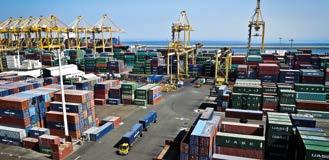
The difference between the price of HSFO and VLSFO is crucial to shipowners’ decision-making when considering installing scrubbers. According to analysis by Ship & Bunker (S&B), it appears that there needs to a difference of at least 100 $/tonne if owners are to commit to scrubbers. In 2020 the price of VLSFO for a while dropped to more or less the same as HSFO and didn’t pass the 100 $/tonne differential mark until early 2021. On average last year, however, the difference was $111.64, above the key milestone but not decisively so.
By contrast S&B reports that the average HSFO/VLSFO price difference in the first nine months of 2022 was 243.13 $/tonne. In theory that should have prompted a surge in scrubber orders. Certainly, a report from Acumen Research and Consulting (ARC) in August predicted strong growth with the value of the global scrubber market growing from $3.6 billion in 2021 to $16.4 billion in 2030.
Anders Skibdal, CEO scrubber manufacturer PureteQ, told World Bunkering: “Most suppliers are hoping that ARC is right in its predictions, but so far relatively few orders for new scrubber systems have been placed.”
There are, though, signs the market could be moving. Skibdal added: “There
are however many more requests for quotations and feasibility studies for installing scrubbers for all types of ships and even smaller ships. Owners that have not presently installed scrubbers are now considering reducing OPEX by installing scrubbers. Charterers are pushing shipowners to install scrubbers and multiple negotiations are ongoing to solve the cost of installing scrubbers. Freight rates have been very favourable in most segments of shipping, but in containers freight rates are now more realistic, thus this segment is beginning to opt for scrubber systems.”
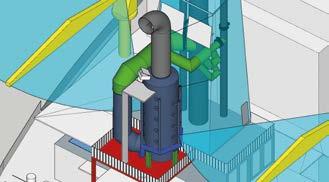
He continued: “A ‘perfect storm’ has hit the world with war in Europe, growing inflation, lack of work force, market
volatility etc. and we see growing consumption of fossil fuels all over the world. This is not going to make a green/ clean transition any faster, as people have other priorities. Hence many shipowners are beginning to realise that the new fuels with reduced carbon, such as methanol, are not going to be available for shipping in scale for years to come. Furthermore, the cost of these new fuels is going to be very high, and the lower energy density require expensive modifications. With the CII being implemented and most ships reducing speed, owners and charterers are forced to look for ways to reduce costs.”
Skibdal said that the best way to do this would be to reduce energy consumption by implementing various technologies

already on the market. But the second best, he argued, would be to reduce the cost of fuels by installing scrubbers and so continue use of relatively cheaper HSFO.
Looking further ahead he noted that the prospect of onboard carbon capture (OCC) is promising but would require a scrubber, of any brand, to clean the gas before installing OCC technology downstream. He conceded OCC technology does not exist at any scale yet but he said: “Many companies including PureteQ are in the development phase and, once the infrastructure is in place, I am sure that development will speed up.”
One factor that could affect scrubber takeup is continuing concern about the impact of washwater on the marine environment. Recently, research from Chalmers University of Technology, Sweden, found that the discharge water is responsible for up to 9% of certain emissions of carcinogenic and environmentally harmful substances in the Baltic Sea, considerably more than was previously understood the case.
The impact of washwater remains a matter of debate with some major ports and states not allowing washwater discharges. Asked if these concerns had led to a shift to closed loop scrubbers, Skibdal commented: “PureteQ is presently upgrading water treatment system for closed loop operation as well as installing water treatment systems on some Hybrid Ready Scrubber Systems. Recently shipowners are asking to get quotes for both open loop and hybrid loop, so yes there has been a change but it has not been that significant.”
PureteQ itself has recently launched its Generation 2 scrubbers with the aim of reducing the time required for installation and thus costs. Skibdal said: “This design enables variable regulation of seawater flow to match the engine design load from 10% load to 100%, which in turn provides for the most energy efficient and seamless operation in the business. The idea is to keep the systems as simple as possible and install scrubbers outside the engine and funnel space to save time and money. There is no need to make significant modifications to existing structures or establishing new ones. Another benefit of installing scrubber outside in open air
is that you do not need to insulate the scrubber tower. And no scaffolding or service platforms are required as most maintenance can be accomplished from within the scrubber tower. The new models come with sensor pockets installed as well as riser pipes to avoid mistakes being made and speed up the installation process.”
As an indication that interest in using scrubbers is growing, Greek shipowner Safe Bulkers has retrofitted Alfa Laval PureSOx exhaust gas cleaning systems on 20 of its bulk carriers and four more retrofits are scheduled through the first half of 2023.
The company’s president, Loukas Barmparis, addressed both the economics of installation and environmental concerns, saying: “When we first made the choice to retrofit Alfa Laval PureSOx systems in 2018, we were convinced that it was a good investment. Today’s increased price difference between low-sulphur and high-sulphur fuel shows that we were correct. We are protecting our margins in a time of uncertainty while simultaneously protecting the environment. Through comprehensive sampling of effluent washwater from open-loop scrubber systems, independent laboratories using EPA or ISO methods have shown that there is little or no impact from the washwater concentrations.”
Another potential disincentive to fitting scrubbers are corrosion problems that have affected some installations.
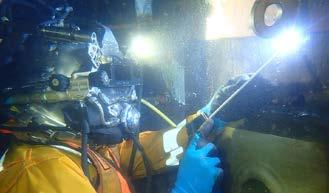
Technology group Wärtsilä and major Danish ship operator A.P. Moller - Maersk have developed a means to prevent
corrosion in scrubber discharge pipes. The permanent in-pipe solution is designed to solve corrosion problems associated with open-loop scrubber washwater discharge.
The risk is particularly high for pipes made of mild steel. In some cases, if the discharge pipes are inadequately protected, severe corrosion can damage the surrounding mild steel hull plates, resulting in water ingress.
The new ‘pipe-in-pipe’ solution allows for the original overboard pipe to remain in situ while a new glass reinforced epoxy (GRE) pipe is inserted into it. No metal cutting or welding is necessary. A SMO steel sleeve is inserted between the new GRE pipe and the existing steel pipe. An adhesive permanently secures the GRE pipe in place. Since this ‘pipe-in-pipe’ solution has a small impact on the internal diameter of the pipe, it is best suited for overboard pipes with a diameter greater than 300mm.
“This is a long-term solution that can be planned for at any time, even if corrosion has not yet occurred. The component pipes can be prepared and stored either on board or at an engineering facility ready for fitting either during a scheduled drydocking or port-call or, if necessary, whilst afloat and in operation using a cofferdam at a convenient time and location” explained William Winters, Managing Director of Wärtsilä Underwater Services. He further added “This inoperation repair offers substantial overall savings to the ship owner and allows the vessel to stay in service”
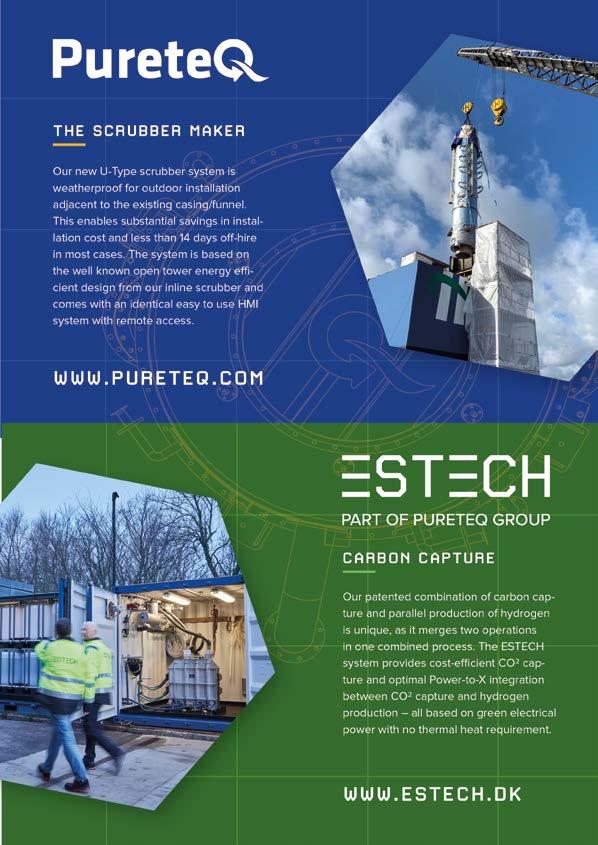
Anew study commissioned by SEALNG has found that liquefied bio-methane (bio-LNG) can make a major contribution to maritime decarbonisation.
Conducted by the Maritime Energy and Sustainable Development Centre of Excellence (MESD CoE) at Singapore’s Nanyang Technological University (NTU Singapore), the study explored questions around fuel availability, cost, lifecycle emissions and logistics, providing an overview of the applicability of bio-LNG as marine fuel. It also investigated the feasibility of LNG and bio-LNG as a realistic pathway for the shipping industry to achieve greenhouse gas (GHG) emission reduction targets in a sustainable manner.
According to the report, Bio-LNG can be blended with fossil LNG in relatively small amounts to reach the 2030 International Maritime Organization (IMO) carbon intensity reduction targets, and the biofuel proportion in the mix can be increased to meet 2050 targets.
The findings suggest that pure bio-LNG could cover up to 3% of the total energy demand for shipping fuels in 2030 and

13% in 2050. If it is considered as a drop-in fuel blended with fossil LNG, bio-LNG could cover up to 16% and 63% of the total energy demand in 2030 and 2050, respectively, assuming a 20% blending ratio, the report says. In the long term, shipowners who have invested in the LNG pathway will need to shift to renewable synthetic LNG (e-LNG).
The report also forecasts that the average cost for delivered bio-LNG will fall by 30% by 2050 compared to today’s values, mainly driven by the reduced cost of producing biomethane in large-scale anaerobic digestion plants. This makes bio-LNG one of the cheapest sustainable alternative marine fuels, compared to bio-methanol and electro-fuels, including e-ammonia and e-methanol.
“Furthermore,” SEA-LNG notes, “the report highlights that the uptake of bio-LNG in shipping will be linked to the widespread use of biomethane across other sectors. This will require national and international standards for biomethane injection into gas grids, plus a commonly accepted certificates of origin scheme to efficiently trade biomethane in its gaseous
and liquefied forms and to minimise transportation costs.”
Peter Keller, Chairman, SEA-LNG, said: “The decarbonisation of shipping will require the use of multiple low and zero carbon fuels. Every fuel has its own individual, but similar, pathway to net zero. When assessing decarbonisation options for the maritime sector it is essential that each pathway is properly evaluated, not simply the destination. It is crucial that decision making is guided by accurate information that assesses each alternative fuel pathway on a like-for-like and full life-cycle basis (Well-to-Wake).”
Keller added: “The viability of the LNG pathway depends on the volumes of bio-LNG and e-LNG that become available to the shipping industry, and the cost of these fuels in comparison to other zero or low carbon fuels. This latest study from the Maritime Energy and Sustainable Development Centre of Excellence at Nanyang Technological University, Singapore, confirms that bio-LNG is a solution for the decarbonisation of the shipping sector thanks to the mature and commercially available technologies for
fuel production and use on-board, existing delivery infrastructure plus the competitive cost compared to other sustainable biofuels and electro-fuels.”
Associate Professor Jasmine Lam, Centre Director, MESD CoE, NTU Singapore, said: “Our research concludes that bio-LNG, produced from sustainable biomass resources, has the potential to meet a significant proportion of future shipping energy demand. The findings show that bio-LNG is among the cheapest sustainable biofuels and can potentially offer significant cost advantage over electrofuels by 2050.”
However, SEA-LNG is far from happy about a report by the shipping research group at UCL Energy Institute, London, entitled Exploring methods for understanding stranded value: case study on LNG capable ships.
The UCL report contends that the continued growth of investment in LNG-capable vessels is contributing to the creation of stranded value risk and by association creating technology lock-in risk that can delay the transition to scalable zero emission fuels and therefore shipping’s decarbonisation.
The study warns that the “value at risk” could be around $850 billion in 2030. It recommends: “To minimise these risks,

investors (shipowners and financiers) should consider not ordering LNG-capable ships and investing in conventionally fuelled ships which are designed for retrofit to zero emission fuels.”
SEA-LNG says the UCL study is a “flawed academic exercise, detached from reality”. It argues that, in setting out a framework for their analysis the report's authors make “innumerable contestable and unsupported statements”.
It says: “Somewhat confusingly, given the focus of their paper on stranded value risk, they ignore the fact that LNG dual fuel engines already provide ship owners with an insurance against stranded assets, as they can burn traditional marine fuels and are currently doing so in Europe as a consequence of the unprecedented spike in LNG prices.”
SEA-LNG adds: “The results reported in this study are meaningless, based as they are on subjective, negative assumptions on LNG. Such flawed analysis can confuse the industry, potentially providing ship owners and investors with justification to sit back, wait and continue to emit GHGs rather than invest in a technology like LNG that offers immediate GHG reductions today together with a clear and competitive pathway to decarbonisation in the decades ahead. Waiting is not an option.”
A second report that makes a case against investment in LNG has been published by the International Council on Clean Transportation (ICCT). The report is called Comparing the Future Demand for, Supply of, and Life-Cycle Emissions from Bio, Synthetic, and Fossil LNG Marine Fuels in the European Union.
The ICCT report focuses on ships trading with the European Union. It predicts a tripling of demand for LNG as marine fuel between 2019 and 2030, based on trends in fuel consumption. It also estimates that renewable LNG will cost seven times more than fossil LNG in 2030 and, therefore, subsidies or other policies would be needed to encourage its use.
It also argues that, for renewable LNG to significantly contribute to achieving climate goals, methane slip from marine engines needs to be virtually eliminated and methane leaks upstream need to be greatly reduced. Additionally, methane leaks from onboard fuel tanks and cargo tanks, which researchers are still working to adequately quantify, would need to be near zero. It is important for policymakers and stakeholders to understand that other fuels, including synthetic diesel and green methanol, could offer low life-cycle emissions without the methane problem, according to the ICCT report.
Once again SEA-LNG strongly refutes the study's findings, saying it “uses poor data and unrealistic assumptions to misrepresent the benefits of the LNG pathway for shipping’s decarbonisation transition and fails to take account of the latest data on technology available to LNGfuelled vessels”.
There may be arguments over how much bio-LNG will available to meet decarbonisation targets, but numerous projects are now underway to produce this alternative fuel.
In a recent development, technology group Wärtsilä is to supply a biogas upgrading and liquefaction solution for a new biogas plant in Sweden. The plant will be used to reduce carbon emissions from transport, and to speed up the transition to cleaner energy. The order was placed by the energy company St1 and will be located at the Borås Energi och Miljö facility at Sobacken, near the city of Borås in
Sweden. The plant is expected to be fully operational by the end of 2023.
The plant will take biogas from municipal waste and wastewater treatment plants, and upgrade it into usable bio-LNG. It will be the first installation of its kind capable of producing both bio-LNG and biomethane simultaneously.
When operational, the plant will be capable of producing 10 tons of bio-LNG per day. In addition to the equipment, Wärtsilä will also support the facility with a spare parts package and a service agreement.
LNG bunkering at Singapore
TotalEnergies Marine Fuels says it expects to start LNG bunkering services in Singapore in the first quarter of 2023, using a newbuild vessel under construction at Sembcorp Marine’s Tuas Boulevard Yard.
The Brassavola will have a capacity of 12,000 cubic metres and is expected to be the largest LNG bunker vessel in service

at Singapore. She will be owned by Indah Singa Maritime Pte Ltd., which is a wholly-owned subsidiary of MOL, and will be chartered by Pavilion LNG Bunker I Pte Ltd., a wholly-owned subsidiary of Pavilion Energy.
TotalEnergies Marine Fuels will employ the Brassavola to supply LNG bunkers to its customers under a long-term agreement with Pavilion Energy.
TotalEnergies Marine Fuels is one of three licensed suppliers of LNG bunker fuels in the Port of Singapore.
TotalEnergies currently charters two 18,600 cubic metre LNG bunker vessels: the Gas Agility, at Rotterdam, and the Gas Vitality, at Marseille-Fos. Since the start of TotalEnergies’ LNG bunkering operations in November 2020, the Gas Agility and the Gas Vitality have performed about 120 LNG bunkering operations in total.
Korean Register (KR) has awarded design approval for Hyundai Heavy Industry (HHI)’s latest rotor sail technology, Hi-Rotor.
According to HHI, the wind-assisted propulsion system can reduce fuel consumption and carbon emissions by 6 to 8%.
The approval follows a close partnership between KR and HHI. Back in December 2020, KR approved an Approval in Principle for Hi-Rotor as a first step to actively developing the technology. This May, both companies collaborated in hosting a Hazard Identification (HAZID) workshop, to further enhance the safety of the system.
HHI is planning to complete the production in the second half of this year, and is concentrating on preparing for a feasibility test, as well as discussing the future
commercialization of the system with major ship owners.
Rotor sails are cylindrical structures installed on ships' decks that reduce fuel consumption and carbon emissions by generating additional propulsion using wind. HHI’s Hi-Rotor uses the ‘Magnus Effect’, using the pressure differences around the rotor sail to generate propulsion.
HHI says its rotor sail differs significantly from other systems already developed as it has a direct drive system. This is achieved through reduction gears connecting the rotor to the electric motor.
Yeon-tae Kim, Executive Vice President of KR Technical Division, said: "We hope that this design approval will enhance HHI's competitiveness in the rotor sail technology market, and we will continue
to enhance our compliance with stringent environmental regulations."
Won-ho Joo, HHI Senior Executive Vice President & Chief Technical Officer said: “We are continuously contributing to strengthening the competitiveness of our customers by concentrating our capabilities on the development of various eco-friendly products to not only improve the fuel efficiency of ships but also to respond to stringent environmental regulations.”
Classification society DNV has given Approval in Principle (AIP) to Azane Fuel Solutions for an ammonia ship bunkering and cargo loading station
Azane says the AIP is an important step in further verifying readiness for the commercialisation of its proprietary ammonia bunkering terminals prior to commencing construction. The first 1,000 cubic metre bunkering terminal is scheduled for operation in 2024. According to Azane, the ammonia bunkering terminals can be delivered worldwide and “are designed to suit the global market”.
The company says the AIP fits within a larger strategy for the company of forging a new safety protocol for ammonia bunkering in Northern Europe, with plans to expand safe ammonia bunkering globally.
Last year the Azane shareholders, Amon Maritime and ECONNECT Energy, received support from Norway's Green Initiative program for the Ammonia Fuel Bunkering Network, along with consortium partners. In April 2022, the company announced that Yara had pre-ordered up-to 15 units to sufficiently cover the Scandinavian market with ammonia bunkering infrastructure.
Following the granting of the AIP, Azane and Yara will initiate an approval process with DSB (Norwegian Directorate for Civil Protection) to establish several ammonia bunkering locations in Norway and Scandinavia.
In a related development, Amon Maritime a set up a new offshore support
operating company, Amon Offshore. The company has been created to build, own and operate a fleet of ammoniapowered supply ships for the Norwegian continental shelf. The ammonia fuel will be provided by Azane Fuel Solutions and Yara Clean Ammonia.
The Norwegian government has stated that all PSVs on the Norwegian continental shelf must emit no greenhouse gas (GHG) emissions by 2030. This requires approximately 80 newbuilds or significantly modified/rebuilt PSVs to be delivered between 2025-2030. Amon says this will be a “massive boost for innovation and value creation in the maritime industry”.
Amon says its PSV has been developed for full compliance with 2030 requirements, offering carbon free operations with best-in-class energy efficiency. It adds that Amon Offshore is working closely with clients to obtain charter contracts, enabling the first ships to be delivered in 2025.
Meanwhile Yara Clean Ammonia has engaged Lloyd's Register (LR) to undertake feasibility studies into using clean ammonia to refuel ships in the Pilbara region of Western Australia. This follows the signing of a collaboration agreement in August between Yara and Pilbara Ports Authority (PPA).

LR is to provide analysis focusing on key factors needed to assess the potential uptake of ammonia bunkering. The feasibility study will comprise the market for clean fuels in shipping; shore side
infrastructure requirements; safety considerations and the regulations required to support ammonia bunkering at Pilbara ports. The study is expected to take at least 12 months.
Last month, the final investment decision was announced for Project Yuri, which will see a renewable hydrogen plant built adjacent to the Yara Pilbara’s existing ammonia plants close to PPA’s Dampier port. The Yuri plant is expected be one of the first globally to demonstrate the use of renewable hydrogen as a feedstock to produce ammonia at an existing ammonia plant, and is the first project of its kind in Australia.
In a separate development ClassNK has issued an AIP for an ammonia bunkering vessel developed by NYK Line.
The company has developed its own design drawings, and introduced a method of creating 3D models linked to the drawings at an early stage of concept design, which is typically done at the detailed design stage after the shipbuilding contract, enabling it to draw up specifications that incorporate sufficient safety measures for ammonia hazardous areas and escape routes based on risk assessments.
ClassNK carried out the review of the design being developed by NYK Line in line with its Part N of Rules for the Survey and Construction of Steel Ships incorporating the IGC Code.
Interest in biofuels has been surging as ship operators look for viable alternatives to reduce their greenhouse gas (GHG) emissions in light of upcoming regulations, both those set to be implemented by the European Union (EU) and IMO regulations. Extensive trials have already proven that biofuel blends, and even pure biofuels (B100) are viable ‘drop-in’ replacements for conventional marine distillate and residual fuel grades. These fuels are already being assessed against the ISO 8217 marine fuel quality standard, with the exception of clause 5.1 of ISO 8217:2017 on FAME levels. The FAME content can be assessed against EN 14214, a standard published by the European Committee for Standardization that describes the requirements and test methods for FAME.
Trickier to ascertain is the true GHG emissions reductions associated with biofuels. Biofuels typically emit a bit less CO2 than marine distillates and residual fuel grades during combustion, the Tank-toWake (TtW) part, but not enough to make a huge difference in overall GHG emission unless taking the CO2 savings associated with producing these fuels into account, the so-called Well to-Tank (WtT) part of the overall Well-to-Wake (WtW) GHG emissions.
The IMO is currently working on draft guidelines for the full WtW life cycle GHG
intensity of marine fuels, with a view to finalizing the draft guidelines at MEPC 80 in July 2023. It is also considering sustainability criteria issues as part of a Fuel Lifecycle Label (FLL). These guidelines will be less than perfect to start with, so will need to be kept under continuous review. The IMO also needs to develop guidance for third-party verification and certification schemes for GHG emission reductions.
The EU, meanwhile, already has a method for determining GHG factors for nonfossil fuels. These can be “default values” based on Directive (EU) 2018/2001 – the Renewable Energy Directive (RED II), which also specified approved certification schemes for WtT emissions.
Netherlands in the lead Industry estimates puts the total volume of pure biofuels supplied to ships at around 700,000 tonnes per year, of which some 80% is delivered in the Netherlands. This is chiefly due to Dutch subsidies that makes marine biofuel products competitively priced with conventional bunker fuels in the Netherlands, while elsewhere biofuels command substantial premiums.
Rotterdam Port Authority figures show that sales of bio-blended bunkers in Rotterdam during the first half of 2022 totalled 522,167 tonnes, of which 400,444 tonnes were VLSFO/biofuel blends. The figures already
point to a huge increase in biofuel blends sales compared to 2021 and will likely grow further, boosted by competitive prices and the so-called Unified Interpretation (UI) approved by the IMO in June. This UI means that biofuel blends up to 30% are to be regarded in the same way as regular oilbased fuels, meaning ships do no longer need to seek exemptions for biofuel trials or have to demonstrate compliance with the MARPOL Annex VI Technical Code to use biofuel blends up to 30% (B30).
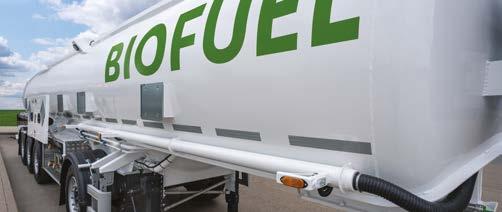
According to the commodity and energy reporter Argus, Fatty acid methyl esters (FAME) made from feedstocks listed in the EU Renewable Energy Directive (RED) as advanced, under Annex IX part A, are eligible for Dutch HBE-Gs, more widely known as advanced renewable fuel credits or “tickets”. The value of these tickets reduces the overall cost of bunkering 100% biodiesel (B100) in the Netherlands, while also reducing the emissions by more than 80% compared with fossil alternatives, according to Argus.
Argus says bunkering B100 in the Netherlands can cut 40-60% off the outright prices due to the Dutch HBE-Gs. In fact, it said advanced FAME for marine application was selling at a discount to MGO in February and March this year. Argus predicts this will happen again this winter because the EU will ban all imports
of Russian diesel from February 2023, which will put a squeeze on availability of middle distillates.
Moreover, with advanced biodiesel, the EU counts it to produce zero emissions from combustion, hence a B30 biodiesel/VLSFO blend, for example, will only generate emissions from the VLSFO part of the blend, according to Argus.
That should make biodiesel blends even more attractive when the EU ETS and the FuelEU Maritime regulations kick in.
Singapore biofuel standard Singapore has so far supplied about 70,000 tonnes of biofuels to ocean-going vessels across more than 40 biofuel bunkering operations, senior minister of state for transport Chee Hong told the Singapore International Bunkering Conference and Exhibition (SIBCON) in early October. He also announced the development of a provisional national standard on specifications of marine biofuel (WA 2:2022).
The Maritime and Port Authority of Singapore (MPA) has developed a framework to allow licensed bunker suppliers to supply biofuel within the Port of Singapore to vessels. The MPA framework does not endorse any particular methodology to account for carbon reduction, but bunker suppliers are encouraged to supply International Sustainability and Carbon Certification (ISCC) certified biofuel.
A growing number of bunker suppliers have announced supply of biofuel blends to ships calling at the Port of Singapore, most recently ExxonMobil which provided a 0.50% sulphur residual-based fuel (VLSFO) processed with up to 25% wastebased FAME. It said the resulting blend meets ISO 8217:2017, while the FAME content complies with EN 14214 and the bio-component has been accredited by the ISCC organisation.
In July this year, the Global Centre for Maritime Decarbonisation (GCMD) announced the launch of a drop-in biofuels pilot project to establish an assurance framework for ensuring the
supply chain integrity of current and future green marine fuels. It will start with fuel blends involving existing biofuels, such as hydrotreated vegetable oil (HVO) and FAME blended with either very low sulphur fuel oil (VLSFO), high-sulphur fuel oil (HSFO) or marine gas oil (MGO) in blends up to 30% biofuels (B30).
Part of the project involves using BunkerTrace’s digital and synthetic DNA tracing products to track marine fuels from production to vessel propulsion. “Hence, the pilot will address traceability of drop-in biofuels from production, distribution, transportation, storage, and bunkering to shipboard application, providing endto-end supply chain transparency,” said a GCMD press release.
Product origin and sustainability of biofuels can vary significantly depending on production pathways. Moreover, biofuels can be blends coming from feedstock with different sustainability profiles, so it will be interesting to see if the DNA tracing will show mainly single-source origin products or biofuels of multiple origins. This could give us some really useful insights into the complexities of documenting the full supply chain of fuels, which will become increasingly important.
In October this year, biofuel supplier GoodFuels announced the results of a new partnership with global certification organisation Control Union and France’s IDS Group to test the effectiveness of a unique isotopic tracer for biofuels. The partnership has seen the companies collaborate to create the new tracer, which
can be added to marine fuels as a unique ‘fingerprint’.

In a press release, they said a successful pilot has proven the effectiveness of the tracer technology in real-life applications, which demonstrated that the tracer does not adversely impact the physical properties, quality and stability of the biofuel, and that tracing and testing activities could be performed without any impact on bunker operations.
“The isotopic tracer stays within the fuel throughout the entire downstream of fuel delivery. It then can be tracked and traced by inspectors to verify that a fuel product has not been diluted or tampered at any stage in the supply chain,” the press release said. The pilot also showed that the isotopic tracer can measure for fuel dilution, when biofuels are used in a blend, for example.
The development partners pointed out that this tracer can also be used to support carbon calculations and provide evidence for carbon pricing and tax reductions, “giving shipowners and operators assurance on the amount and quality of biofuel they are deploying in their pursuit of sustainable shipping”.
BunkerTrace, essentially, does the same thing and while uptake of its DNA tracing products has been limited as a tool for tracking the quality of conventional fuels, such tracing tools may well become an important part of proving the true origin of fuel blend components as carbon accounting becomes ever more important.
Naval architects Aurelia Green
Ship Concept Design has unveiled a new design with 100% hydrogen propulsion. Classification society RINA has awarded the concept Approval in Principle based on its recently published Rules for Hydrogen Fuelled Ships and the RINA Guide for the Approval in Principle of Novel Technologies.
The design concept is the ACD01 1000 ro-ro vessel which has electric propulsion machinery using highly compressed H2 as fuel.
Aurelia says the compressed hydrogen generates no environmentally harmful emissions. The hybrid propulsion is based on battery and fuel cell power modules. The batteries provide auxiliary power for the vessel in port.
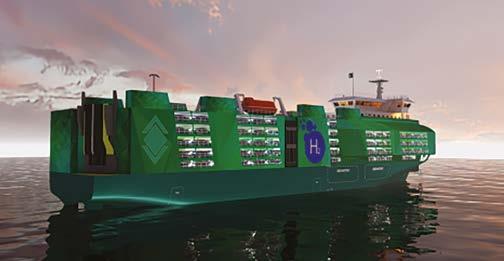
Ton Bos, partner, and co-founder of Aurelia commented: “The world of zero emissions is a pioneering world open to new opportunities, which to some extent reminds me of the first operations in the heavy lift sector, where there was also no experience yet. In this sense, the cooperation with RINA is a strong signal that the maritime world is ready to work together for clean shipping.”
“This cooperation gives us the opportunity to tune the recently published rules for
Hydrogen, to focus on new technical challenges as well as to verify the technology readiness level of the components and systems used for the storage, supply and bunkering of hydrogen. The commitment of the persons involved is high and this will bring realistic achievements”, said Patrizio Di Francesco, EMEA Special Projects Manager at RINA.
Raffaele Frontera, founding partner of Aurelia Green Concept Design, said: “This new design for a compressed hydrogen ro-ro is part of a long-term cooperation between Aurelia and RINA in which we will develop liquefied hydrogen propulsion system that could be used for heavy lift, cruise and ro-pax vessels. This cooperation with RINA will ensure that the design of renewable ships becomes a reality and does not remain a distant dream. From Aurelia we are synergising with RINA to achieve this out of the box design concept, we think big, we think about the future, we think about safety and our planet.”
Hydrogen fuel cell test facility
Major marine battery systems provider Corvus Energy has opened a test area for hydrogen fuel cells at its production site in Bergen, Norway. The development is part of the H2NOR project being undertaken by a consortium including Corvus Energy,
Toyota, Equinor, Norled Wilhelmsen, LMG, USN, Maritime Cleantech and other supporting partners.
In March the project received Approval in Principle from DNV and the test area will be an important part of the prototype testing and validation.
Thor Humerfelt, Senior Vice President Product Architect of Corvus Energy explained: “Batteries and fuel cells are complementary products, and they need to work together in order to achieve optimal efficiency and extended lifetime. We will test multiple combinations of batteries and fuel cells for various operational profiles, and this is why the test site is so unique and important. In the end, we will have a system that will give recommendations for the vessel’s crew on the most optimal operation."
Corvus CEO Geir Bjørkeli said: "The interest in hydrogen as a marine fuel is increasing significantly. A dedicated marine and optimized hydrogen fuel cell solution is a vital step toward the decarbonization of shipping. Being able to test both battery and fuel cell systems together and make them work in perfect harmony will potentially revolutionize the global maritime industry."
An order for the first dedicated methanol bunkering tanker in Singapore has been placed with Sasaki Shipbuilding Co. in Japan by Global Energy Trading (GET). The ship will be operated by Stellar Ship Management Services. Both companies are wholly owned subsidiaries of Global Energy Group.

The 4,000 dwt IMO Type 2 Chemical and Oil Tanker will be classed by BV and is due to enter service by the end of 2023.
Meanwhile, Danish container giant AP Moller - Maersk (Maersk) has ordered a further six large ocean-going vessels that can sail on 'green' methanol. The six vessels will be built by Hyundai Heavy Industries (HHI) and will have a nominal capacity of approximately 17,000 TEU containers. They will replace existing capacity in the Maersk fleet.
“Our customers are looking to us to decarbonise their supply chains, and these six vessels able to operate on green methanol will further accelerate the efforts to offer our customers climate neutral transport. Global action is needed in this decade in order to meet the Paris Agreement’s goal of limiting global warming to a 1.5°C temperature rise,” says Henriette Hallberg Thygesen, CEO of Fleet & Strategic Brands at Maersk.
Maersk has set a net-zero emissions target for 2040 across its entire business, and has also set tangible near-term targets for 2030 to ensure significant progress. This includes a 50% reduction in emissions per transported container in the Maersk Ocean fleet compared to 2020, and a principle of
only ordering newbuild vessels that can be operated on green fuels.
With the order, Maersk has in total ordered 19 vessels with dual-fuel engines able to operate on 'green' methanol.
On costs, Maersk says that, benchmarked against conventional fuel capabilities, additional capital expenditure (CAPEX) for the methanol dual-fuel capability is in the range of 8-12%, which is an improvement compared to when Maersk ordered eight vessels with the same technology last year.
According to Maersk, when all 19 vessels on order are deployed and have replaced older vessels, they will generate annual CO2 emissions savings of around 2.3 million tonnes.
While most of the focus is currently on using methanol as fuel in conventional diesel engines, Alfa Laval has started up a small-scale methanol fuel cell system at the Alfa Laval Test & Training Centre.

The technology group says that, based on positive test results, the project is on track for a 200 kW installation. It asserts: “Ultimately, it will provide the marine industry with a scalable energy supply that does not involve combustion.”
Alfa Laval says it is the driving force in a marine fuel cell development project funded by the Danish Energy Technology Development and Demonstration Program. The project’s aim is an efficient and costeffective energy solution based on hightemperature proton exchange membrane
(HT-PEM) fuel cells. In the first step, a 10 kW (2 x 5 kW) installation has been running at the Alfa Laval Test & Training Centre since July.
“We are pleased with the progress in the HT-PEM fuel cell system project,” says Alfa Laval’s Jeroen van Riel, Business Development Manager, Marine Energy Solutions. “Although this first installation is small, it allows us to test the basic setup and the function of the supporting equipment. The data compiled so far is very promising, which suggests that we can move into the next stage as planned.”
The fuel cell system in development, which will provide clean operation with no particulate emissions, uses carbonneutral renewable methanol. It comprises modules of HT-PEM fuel cell stacks that can be combined in racks of 200 kW, creating a standardised, scalable system for many megawatts of power.
“The project will lead to an integrated, safe and marine-certified product for application on tomorrow’s green ships,” says van Riel. “Within the near future, it will offer a realistic alternative to combustionbased auxiliary power on board.”
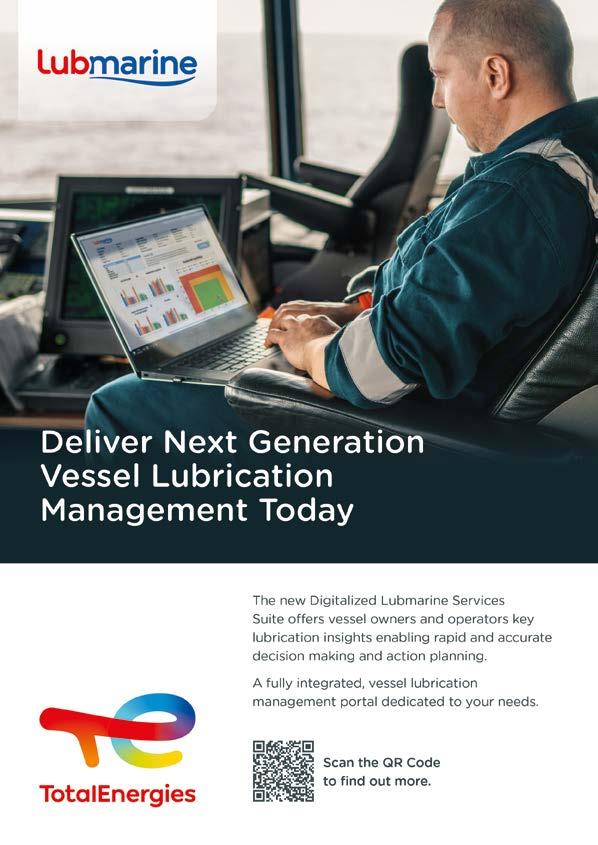
Chevron supplies first stem of 40 BN Category II lube oil
Chevron Marine Lubricants made its first delivery of a 40 BN Category II lube oil in August, to SIEM Car Carriers. Taro Ultra Advanced 40 has been developed for MAN ES Mk9 and above two-stroke engines.
After the IMO’s 0.50% sulphur cap came into effect on 1 January 2020, MAN ES defined two performance standards for lube oils intended for use in its twostroke engines. Existing oils were dubbed Category I lubes and can be used in MAN ES Mk 8 and earlier engines, but it set a higher Category II standard for Mk 9 and later engines.

With less sulphur in the fuel, lubes with lower base numbers would be needed, but they also had to match or exceed the cleanliness achieved when using typical two-stroke lubes of around 100-140 BN. Until suitable 40 BN oils were developed, MAN ES advised operators to alternate between 100 BN and 40 BN oils, based on scavenge port inspections and its analysis of oil drainage samples.
In April 2022, Taro Ultra Advanced 40 was granted a ‘no-objection letter’ (NOL) by MAN ES, confirming that it can be used continuously, without the need to switch to high-BN lubes. This reduces operational complexity for ships’ engineers and removes the need to carry multiple grades of lube oil.
Chevron Global Marine Lubricants' General Manager Pat McCloud says: “We have been working with our supply chain to set up blending and supply of the product and it is now one of the first 40 BN category II lubricants to be available in major shipping hubs in commercial volumes.”
He added: “We successfully completed the development of Taro Ultra Advanced 40 and met the MAN ES Category II requirements through thousands of hours of development work in the lab and field testing in collaboration with our technology partner and customers.” A key requirement in MAN ES’ assessment of candidate oils is that they provide the same level of engine cleanliness as high-BN lubes.
According to Chevron the development and approval tests took place on vessels with MAN 8G80ME-C9.2 engine burning VLSFO, but Taro Ultra Advanced 40 is also suitable for use with other low-sulphur fuels, such as ULSFO, LNG and methanol. The lubricant manufacturer commented: “This versatility is crucial for SIEM car carriers, which will be using the oil in the LNGfuelled MAN ES 7S60 ME-C GI 12,614kW low-speed engines installed in its 7,500-car capacity sister ships, SIEM Aristotle and SIEM Confucius.”
Clean piston - It is vital for cylinder oils that have Category II status to have excellent performance, centred on their cleaning ability.

The Maersk Mc-Kinney Moller Center for Zero Carbon Shipping (CZCS) has produced a report on the role of onboard carbon capture in maritime decarbonisation.
This report examines the role of onboard carbon capture (OCC) in decarbonizing the maritime industry using a series of case studies. The case studies analyse the impacts of full or partial application of OCC on container, bulk and tanker vessels using carbon-based fuels, as part of a newbuild or retrofit.
Onboard carbon capture (OCC) is being considered as a technology that will play a role in decarbonizing shipping, in combination with energy efficiency and alternative fuels. OCC can be applied to all carbon-containing fossil, electro, and biofuels and, as a result, could play a mid- to long-term role in maritime decarbonization. However, the applicability of OCC depends on several factors including OCC technology development, commercial viability, alternative fuel prices and availability, and future emission-related regulatory requirements.
To gain a better understanding of the role of OCC in maritime decarbonization and
assess OCC’s business case for different vessel types and sizes, CZCS analysed the applicability of OCC to the largest shipping segments (container, bulk, and tanker), main carbon-based fuels and full and partial application as part of a retrofit or newbuild.
CO2 can be separated or captured both pre- and post-combustion. Precombustion capture uses reforming to separate gases into mainly hydrogen and CO2. This process is used when reforming carbon-containing fuels to hydrogen for onboard use in fuel cells. Post-combustion capture utilizes the exhaust gas to capture and store the CO2. There are several different exhaust gas (post-combustion) carbon capture technologies and CO2 storage types, which could be considered for onboard use. Preconditioning to increase CO2 concentration is needed for some carbon capture technologies. For this study, post-combustion liquid amine absorption with liquid CO2 storage was used. The full OCC system consists of a liquid amine absorption capture unit, liquefaction unit and storage tank.
CZCS completed a series of case studies covering the installation of OCC on low sulphur fuel oil (LSFO)-, LNG- and methanol
(MeOH)-fuelled vessels within the three largest segments (container, bulk, and tanker).

While most of CZCS’s studies focus on newbuild integration, the VLCC case study also includes a study of retrofitting a partial and full OCC system on an existing vessel. It did not consider integration of OCC on LNG bulk carriers due to significant cargo losses
As endurance and ship speed (propulsion energy) have a major impact on the ship’s arrangement, these were carefully defined before starting each case study. Next, the study considered the required dimensions for CO2 storage tanks and their ideal location. Loss of cargo (volume and weight) when installing an OCC system was also an important consideration. In some cases, CO2 storage tanks must be installed in cargo holds, resulting in cargo loss. For this study, loss of cargo weight was calculated as the increase of lightweight due to the carbon capture system plus the weight of captured CO2 minus the weight of consumed fuel.
For a very large crude carrier (VLCC) newbuild, the best business case studied, CO2 abatement cost ranges from $220-290/
tonne CO2 with a tankto- wake effective CO2 emission reduction of 74-78%. The VLCC’s endurance was based on a Persian Gulf (PG)-Japan round trip (13,400 nm, 41days) at a speed of 14.5 knots. We assumed that CO2 would be discharged in PG for the VLCC case. Carbon reduction performance for the VLCC case is provided in Figure 3. For the LSFO fuel type, the OCC system increases CO2 emissions by 42% due to the additional energy demand. In case of LSFO version and maximum carbon capture, about 55% of the additional energy is required for electricity (for circulation pump, liquefaction, etc.) and another 45% for steam (for separation of CO2). With an 82% capture rate, the effective emission reduction compared to the base ship CO2 emissions is 74%, which is like the MeOH version at 75% effective emission reduction. The LNGfuelled version can achieve 78% effective emission reduction due to a lower baseline CO2 emissions and lower additional energy requirements.
OCC with chemical absorption is technically feasible and expected to reach commercial availability by 2030. Additional OCC energy requirements lead to higher total fuel consumption (up to a 45% increase).
Potential application of OCC shows the most promise for newbuilds as retrofits are costly and can require major modifications.
Partial carbon capture typically leads to higher CO2 abatement costs due to high initial CAPEX, and OCC on large tankers has the best business cases while small bulk carriers have the most challenges.
Although the emissions reduction potential of OCC is significant, currently its CO2 abatement costs are high. Still, with further development OCC could play a role in the mid-term to reduce the emission intensity of existing fossilfuelled vessels.
The report notes that further analyses and developments are required to maximize OCC emission reduction and minimize costs, as well as developing business models that would allow utilization and/ or storage of the carbon captured onboard vessels. As a continuation of this work, CZCS has initiated an onboard carbon
capture working group to study additional OCC technologies, applications, and business models.
It concludes: “Although OCC technologies are still in development, they will be commercially available soon and can provide significant emission reductions. As a result, ship owners aiming to decarbonize should assess their mid-term emission reduction targets and consider including OCC if it is an option for their vessel types, sizes, and trades.
On the same theme, classification society ABS notes: “Current industry research indicates that onboard carbon capture will be an important factor in reaching the IMO’s 2030 and 2050 emissions reduction targets. Although onboard carbon capture systems are still being piloted, we expect increased activity over the course of the next decade, especially as discussions on global carbon markets advance.”
A new ABS publication, Insights into Onboard Carbon Capture discusses the current regulatory landscape surrounding this new technology and outlines the methods of onboard carbon capture including incorporation into existing equipment, such as scrubbers. The publication also covers carbon handling and storage, downstream considerations as well as some of the latest ongoing activities surrounding this technology.
Shipboard demonstration project Technology company Alfa Laval says it will be a technology partner in the joint project initiated by the Global Centre for
Maritime Decarbonisation (GCMD), Oil and Gas Climate Initiative (OGCI) and Stena Bulk to investigate the onboard capture, storage and off-loading of carbon dioxide (CO2). Alfa Laval will bring technological and engineering expertise to the project to help understand the challenges and opportunities of deploying carbon capture technology on ships.
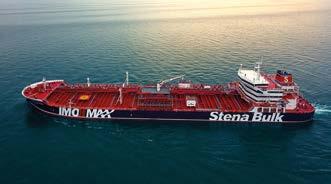
Alfa Laval asserts that Project ReMarCCAbLE (Realising Maritime Carbon Capture to demonstrate the Ability to Lower Emissions) is the world’s first project aimed at demonstrating end-toend shipboard carbon capture at scale. The seven-member consortium will test a carbon capture unit onboard a Stena Bulk MR tanker to assess the operational challenges on a ship at sea and identify potential cost reduction measures for future commercial applications. The success of project ReMarCCAbLE has the potential to accelerate commercial deployment of shipboard carbon capture technology by 2026.
OCC on container ships North European short-sea container ship operator Samskip says it is making carbon capture a key part of its integrated plan for decarbonising shipping, after choosing the Value Maritime’s Filtree gas cleaning solution for the container ships Samskip Innovator and Samskip Endeavour.
For ships running on conventional marine fuels, the Filtree system captures 30% or more of CO2 emissions, providing owners with a direct response to coming restrictions on greenhouse gas emissions. Samskip says that carbon capture is
complementary to other parts of strategy for decarbonisation.
“We work closely with freight owners who prioritise sustainability and whose end consumers hold them to account,” said Erik Hofmeester, Head of Vessel Management, Samskip. “Samskip Innovator and Samskip Endeavour, for example, run between the UK and the Netherlands on bio-fuels, which already cut CO2 by 90%. Using the Filtree system in addition will allow us to offer our first carbon neutral short-sea services.”
Filtree is a prefabricated, pre-installed gas cleaning system for ships which removes sulphur, particulate matter and CO2. The system also neutralises the PH value of wash water, removing oil residues and ultra-fine particles.
Due for commissioning in early 2023, each Samskip installation will feature a gas cleaning unit behind the ship funnel, with recovered CO2 pumped to a 10MW CO2 battery set housed in ISO tank containers and carried on deck. Charged during the voyage, these batteries are unloaded in port, with Value Maritime trucking them to CO2 consumers such as greenhouses for discharge, then returning them empty for the next voyage.
Carbon capture plus hydrogen production
Danish scrubber manufacturer PureteQ Group says it is developing a system that
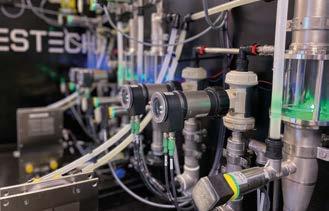
will both capture carbon from emissions and also produce hydrogen.
The company’s CEO Anders Skibdal told World Bunkering: “Early on we began a research program into Carbon Capture Technologies, and the Group have been granted patents on a technology that combines Carbon Capture from exhaust gas with Power-to-X in US as well as in Europe. The solution CCCH2 is a unique combination of Carbon Capture and parallel production of hydrogen. The technology is based on principles from the unique scrubber technology with hydrodynamic fluid distribution as well as on the existing and well proven digital platform for other in-house technologies. The hydrodynamic fluid distribution ensures optimal conditions for the gas/ fluid reaction, resulting in a smaller absorber/scrubber.”
He added: “The Group has been able to accelerate the product development process and the task of scaling the technology by more than 100 times have begun. When this work is well underway, the first commercial plant will be erected. In 2023 we intend to investigate feasibility of on-board CCS based on standard amine processes but still with a PureteQ scrubber as a vital component.”
The “Power-to-X” concept covers the activities of taking surplus renewable electricity from wind, solar or water and converting it into other energy carriers
(the “X”) to be able to store the energy for later use and absorb energy fluctuations.
Pre-combustion carbon capture Hydrogen technology company Rotoboost is collaborating with Class Society ABS for the marine introduction of what it describes as “a first of its kind for precombustion carbon capture system based on thermocatalytic decomposition process (TCD)”.
ABS awarded Rotoboost an Approval in Principle (AiP) for its thermocatalytic decomposition technology for continuous hydrogen production and carbon capture onboard marine vessels.
Rotoboost says its technology converts natural gas into hydrogen and solid carbon with an efficient liquid catalyst. The product gas can be used for fuel cells or as blend-in fuel for combustion engines or gas fired boilers. The process is able to reduce overall carbon emissions by up to 100% depending on heating method. “The system can be scaled up modularly step by step to meet progressing emission regulations while being cost effective for ship owners compared to green fuels or conventional carbon capture systems (CCUS),” said Kaisa Nikulainen from Rotoboost.
According to the company, using hydrogen as a blend-in fuel can also significantly reduce the methane slip from combustion engines (methane is over 25 times more potent greenhouse gas than CO2) and reduce particulate matter emissions by capturing carbon in solid form before combustion. Both of these factors dramatically reduce overall carbon emissions from the vessel.
“Decomposing methane into hydrogen and solid carbon is an intelligent way to implement a carbon capture and storage (CCS) solution onboard gasfuelled ships. This method reduces the storage need onboard, and the solid carbon can be used in the production of fuel cells and batteries and can be recycled again and again. This technology is one that promises to accelerate the energy transition,” said Georgios Plevrakis, ABS Vice President of Global Sustainability.
Global law firm Ince has highlighted a recent case, Eastern Pacific Chartering Inc v. Pola Maritime Ltd, involving alleged underperformance. Ince partner Peter McNamee and managing associate Sophie Henniker-Major note that the Commercial Court dismissed a claim for wrongful arrest in an underperformance dispute and also gave helpful guidance as to how speed and performance cases are to be approached.

The defendant charterers chartered the Divinegate from the claimant owners for the carriage of pig iron from Latvia to New Orleans in October/November 2019. Charterers ordered the vessel to proceed at eco-speed on the laden voyage. Following completion of discharge, considerable marine growth was observed on the vessel’s hull and charterers claimed that the vessel’s performance was significantly affected, either due to hull fouling or owners’ breach of their clause 8 (utmost despatch) obligations. Charterers sent a letter before action and did not pay the outstanding hire.
On 1 July 2020, owners arrested the Pola Devora in Gibraltar to secure their claim. In support of the arrest, they relied on a publicly available Lloyd’s List Report which listed the beneficial owner of the Pola Devora as the defendant charterers since 5 July 2019, with the registered owner being a Russian entity called Pola Rise LLC, also from that date. Prior to that,
the registered and beneficial owners were listed as being GTLK Five Limited, Malta and PJSC State Transport Leasing Company (GTLK) respectively. Charterers contended that the arrest was unlawful because GTLK Malta held both legal and beneficial ownership of the vessel at the date of the arrest and they produced a Seaweb report in support. On 6 July 2020, further documents were provided evidencing the fact that the Pola Devora was not owned by charterers, following which the arrest was lifted and a Club LOU was put up as security for Owners’ claim.
Owners claimed for outstanding hire, bunkers and other expenses totalling nearly US$ 100,000. Charterers in turn sought deductions from hire and also claimed damages for breach of charter regarding the vessel’s performance. A separate counterclaim was advanced for over US$ 70,000 in damages concerning owners’ alleged wrongful arrest of the Pola Devora
The parties differed on the appropriate method to be employed in assessing the vessel’s performance. Owners contended that performance should be assessed conventionally, as per the Didymi, i.e. by reference to the vessel’s speed during good weather. This speed is then extrapolated against the entire laden voyage, since if she underperformed in good weather, she will do so in bad weather too. On the facts, there was no good weather period on the
laden voyage to serve as the basis for a reliable assessment of the vessel’s ability to meet the warranted performance.
Charterers, however, argued that the good weather method is inherently imprecise and suggested instead that underperformance could be established by reference to the vessel’s measured RPM (revolutions per minute) which reflect the engine speed maintained by the crew. On the basis that the main engine was operated at 92 RPM or lower throughout the laden voyage, there was a breach of clause 8 irrespective of whether there were any good weather days against which to test the vessel’s performance.
The court preferred the 'good weather' method put forward by owners, suggesting that this method accurately reflected underperformance, including where the master had unjustifiably not applied sufficient engine speed in breach of clause 8. In these circumstances, however, charterers’ claim for time lost solely due to hull fouling would represent a double recovery (as underperformance by reason of hull fouling was contemplated by this method) and so was rejected.
On the facts of this case, the RPM method employed was found not to be reliable in identifying loss of time: it made incorrect assumptions as to the resistance on the hull and made no allowances for weather
conditions being a reason for a reduction in engine speed, as well as ignoring the fact that there were some periods where the vessel did achieve the warranted speed.
In applying the 'good weather' method, the court held that the vessel had failed to meet the warranted speed of 12.5 knots in good weather and so there was underperformance giving rise to a loss of time of 16 hours. As such, owners had failed to proceed with utmost despatch. Evidence from the vessel’s logbook suggested that the engine had been operated at a lower speed to maintain her consumption below the charterparty warranty rather than in response to weather conditions and the weather conditions relied on by owners were not sufficient to justify this lower speed.
On the evidence, the court found that charterers were not the beneficial owners of the Pola Devora at the time of the arrest.
McNamee and Henniker-Major comment that speed and performance claims commonly arise and will be familiar to
shipowners, charterers and their clubs. As this case demonstrates, they are frequently disputed due to differing ways in which weather, performance and consumption can be assessed, as well as the methodologies to be adopted. In this regard, the Court has given some helpful guidance as to how performance warranties should be approached and applied.

The wording of the charter should be applied as this should reflect the parties’ desire to achieve certainty and a commercial solution if speed and performance issues arise. The court will adopt an approach which reflects commercial practice in assessing performance and the specific wording agreed by the parties, rather than imposing legal methodologies.
The 'good weather' warranty tests against a ship’s actual performance at sea during the charterparty, rather than adopting a paper calculation of the engine's capability. If a master maximises the weather or currents (or fails to do so) then this is part of the vessel's capability as
much as the capability of its engine or the condition of the hull during any period of review.
The ’good weather' method is conventional, but is not the only available methodology for making a claim for underperformance and does not bar alternative methods being used to claim compensation. However, where a charter contains a performance warranty, it is suggested the 'good weather' method should be applied as it reflects the chosen benchmark for performance. Any alternative method must be consistent with the express wording of the performance warranty contained in the charter.
As to the arrest, assessing the true beneficial ownership of a ship is not always straightforward and it is not unusual for there to be a lack of clarity or errors in the information in the public domain. So long as the evidence and circumstances have been relied upon with an honest belief such that bad faith cannot be established, a party will not be found to have arrested a vessel unlawfully.
ReseaWorld provide bunkering and related services globally and aim to achieve the highest level of customer satisfaction everywhere in the world. With over thirtyfive years experience in the Shipping world, ReSeaWorld are a competent and reliable partner.
The strong experience of the senior management team, the motivation and the determination of the young team, together, give ReSeaWorld the perfect balance in order to satisfy all customers' needs.
World Bunkering recently sat down with them to find out how business has been during the last 12 months.
WB: It’s been 12 months since we last spoke to you, how has business been?
RSW: It is our privilege to be a part of this year’s edition. Since we last spoke 12 months ago, work has been challenging with all that has happened in the world but, nevertheless, we have been able to stay strong and develop a growing business. Our operations volume has increased, and we have been diversifying our activities with new projects.
WB: Is there a difference between a family business like ReSeaWorld and other industry players? Are there specific positives/ negatives?
RSW: As a family business, our common values and loyalty gives a strong added value, an extra sense of purpose and pride in everything we do. Having a shared longterm perspective helps us to have clear strategy and decision-making throughout the business. We can guarantee our clients stability and trust in the authenticity of our characters. Reseaworld’s strength resides in a strong history in the shipping sector and consolidated relationships with Shipowners and Physical Suppliers.
Unlike other types of businesses, wealth planning for a family business becomes more complex, as most families have a large portion of their assets committed to their business. Thus, business management is strongly intertwined with estate planning, business planning and family planning.
WB: With Russia’s recent invasion of Ukraine and the spike in oil prices, has ReSeaWorld seen any impact on their services they provide? And what are you doing to combat these global issues.
RSW: With the Russian invasion of Ukraine, the surge in oil prices had a bearing on credit lines that naturally became less strong; in addition, a greater attention must be given to assure compliance of new regulations and sanctions that limit the ability to offer services to those who touch Russian ports or in any way have ties to Russia. Despite this, we have managed to ensure the best service possible to existing and new clients, guaranteeing smooth supplies and incrementing our business volume.
WB: Since the worst of the pandemic is now behind us and traffic and demand for ship services on a local level has recovered. Do you see any further difficulties to overcome?
RSW: As the international response continues to develop, organisations are operating in uncharted waters. Critical information on the characteristics of this new virus and its impacts on global business activity are difficult to assess and are changing overnight. Although the worst of the pandemic is behind us, among the difficulties still to be overcome we find the difficulty of communicating with those who still have ties to Russian ports, and therefore without a free market; and again, the return to a price level that will help work harder with the available credit lines, to avoid events such as strikes among workers, transporters and refineries, which have occurred more and more recently.
WB: What are the immediate and long term plans for ReSeaWorld
RSW: In our short-term plans we certainly consider increasing our business of marine lube oils; in fact, many projects, which will be announced very soon, revolve around this goal. We aim for continued growth by refining the range of bunkering services we provide.
will achieve our goal.
We are looking to expand all over the world regarding supply and sales, except the ARA and Mediterranean area, where our business is already consolidated.
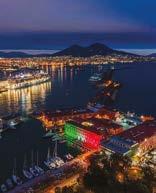
WB: Finally, as a member of IBIA, can you tell us what you want from the Association? What do you think are the most important services we provide for our members and the marine fuels sector in general?
RSW: As an IBIA member for many years now, and currently a proud member of the board of directors, the most important service this association offers, in my opinion, is the possibility to give a voice to the individuals in this sector to address any thematic or ideas they may have. Furthermore, the association offers constant information transmitted regularly regarding new industry regulations and the green issues protagonists of the immediate future. Lastly, one of the most precious services the association offers is the networking opportunities that give the possibility to create new synergies. My wish, therefore, is for the association to expand its reach, constantly retaining the members already present and attracting new ones, sharing the great privilege of being a part of this group.
www.reseaworld.com

World Bunkering recently spoke to Gulshan Jugroo from Southbond Shipping Agency Ltd to discuss how recent world events have affected them and how they are navigating these times.

WB: Russia’s invasion of Ukraine has caused a spike in oil prices, as well as shifts in global trading patterns and supplydemand, that doesn’t show much sign of easing any time soon. With Mauritius on the main Asia-Africa-Europe trade rather than northward through Suez, but at the same time a developing bunker hub, has SSAL and Mauritius seen any impact on demand or shipping levels from oil price shifts and other changes?
GJ: Yes, SSAL’s clients have been greatly affected by the spike in prices. More importantly many of our European clients with Russian flag’ vessels have been penalized by physical bunker supplier with European Principals who refuse to service any Russian flag vessels. Our clients hence skipped Port Louis to other ports where they would be serviced.
WB: On a very broad global level, shipping traffic and trade seems to have largely recovered from the worst of the pandemic, though some of the main Asian port states have seen fresh waves of cases. Has traffic and demand for ship services on a local level recovered too, though, or are there still difficulties to overcome?
GJ: Yes, definitely Port Louis is seeing more traffic in port activities since the end of the pandemic. Port authorities have also eased up on restriction and our clients are slowly making their way back.
WB: What do you think the overall outlook for the coming months is? Are there any particular challenges or opportunities on the horizon?
GJ: Activities in Port Louis will continue to grow steadily. Port Louis is still gearing up to be a bunker hub with major international players. Although Covid-19 has showed down the spike of interest which was there before the outbreak.
As far as SSAL is concerned, the next coming months are quite exciting as our clients are coming back more often to Port Louis for crew changes, provisions, provision of private maritime security services. The challenges remain, of course, flight connectivity and bunker & provisions prices.
Flight connectivity seems to be getting better as more and more destinations are being served from Mauritius. Bunker prices is dependent on world market and physical suppliers to price their products against neighbouring ports.
We also have to note that the US Dollar has taken a big jump with the devaluation of the Mauritian rupee.
This has an impact on all provisions being imported by ship chandlers.
www.ssalmru.com
IOML has presently a total of 30 filling stations across the island with the latest one commissioned in February 2022 at Montagne Longue along the M3 Motorway.
IOML is the leading supplier of Jet Fuel in Mauritius. Within a short span of time, it has become the most preferred aviation fuel supplier in Mauritius.
IndianOil (Mauritius) Ltd is firmly present in the bunkering segment and has lately acquired a new barge to better supply vessel routing through the Indian Ocean. With the objective to ensure the highest quality, the fully automated State of the Art Terminal has dedicated pipelines for each type of fuel it handles. For bunkering IOML has laid 250 mm diameter pipelines for both Fuel Oil (VLSFO) and Gas Oil (MGO) on its quays of operation. IOML has installed highcapacity pumps that can deliver Fuel Oil (180cst) at a rate of 125 cubic M/Hr, and Marine Gas Oil at a rate of 75 cubic M/Hr reducing bunkering time.
The Barge characteristics are as follows:
IOML also delivers ex-pipelines at various Quays namely Quays 1,2,3,4, & New Oil Jetty.
Moreover, IOML markets the brand SERVO of Marine Lubricants at very competitive prices. IndianOil Mauritius Ltd proudly confirms its compliance with the above. Apart from the usual SERVO Marine grades marketed in Mauritius, IOML is also marketing IMO 2020 compliant grades of lubricants.
For your enquiries feel free to reach out to:
Jyotish Kumar Jha | Vice President Marketing Operations
IndianOil (Mauritius) Ltd | Mer Rouge, Port Louis, Mauritius
Tel: (230) 217 2710
Mobile 1: (230) 5 966 6666 Fax: (230) 217 5500 Email: vpmkt@ioml.mu www.ioml.mu
Parikshit Sembhoo | Deputy ManagerInternational Marketing
IndianOil (Mauritius) Ltd | Mer Rouge, Port Louis, Mauritius


Tel: (230) 217 2710
Mobile 1: (230) 5863 6004 / 5942 8497 Fax: (230) 217 5500 Email: mktg1@ioml.mu
NACOL, offers high quality fuels and lubricants and ensures efficient delivery service to all types of vessels:
Guaranteed Marine fuels quality according with ISO 8217: 2017 standards:
• LS MGO Max 0,1%S (constant availability)
• IMO 2020 Compliant Fuel Oil with max 0.5% Sulphur Content
• Competitive prices in the region
• Safe and efficient supply service
• Fleet compliant with international standards: MARPOL, SOLAS, ISPS and ISM

• High quality lubricants in partnership with GALP-LUBMARINE
Cape Verde, ADVERTISE IN
located on the main
routes between Europe, West Africa and
Enacol can deliver bunker fuels to international fleets in Cape Verdian main ports of Mindelo (alongside berth and anchorage) and Praia (service alongside berth only) by barge, truck or pipeline.

Mindelo have been reinforcing its position as a recognized and specialized “bunkeronly” port due to its perfect anchorage conditions for a safe and efficient quick turnaround bunker operation without congestion, bad weather or security risks.
The port, supported by an international airport nearby and quality hotels for accommodations, offers a wide range of
maritime services, such as crew changes, spare parts supply, ship chandling, sludge disposal, fresh water, among others.
We look forward for your enquiries!
Based ENACOL, CONNECTING CONTINENTS Increase your visibility to the global bunker industry with an advert in World Bunkering. The ONLY official magazine to IBIA. For more information about our media packages or to make a booking please contact our Projects Manager Alex Corboude. Alex Corboude Project Manager, IBIA’s World Bunkering Tel: + 44 203 935 1474 Mob: +44 7957 472 317 Email: alex@worldbunkering.net www.worldbunkering.net
This year marks the 70th anniversary and history of Lubmarine, a remarkable story that started from relatively humble beginnings back in 1952, but which has since grown to become a leading player in today's global marine lubricants market.
From early beginnings of providing lubricants to 40 steam ships in France in 1952, today Lubmarine is present in 100 countries and 1,000 ports.
In this article, we take a look back to where the Lubmarine story started and the strength of the legacy that remains at the core of the business today.
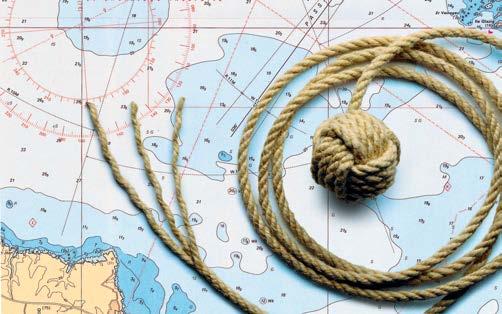
How the story began Lubmarine’s history began in 1952, when a small petroleum business based in France named Antar, merged with the Société des Consommateurs de Pétrole (SERCO), inheriting a small piece of marine business consisting of the lubrication (300 t/year) of around 40 steam cargo vessels that had been used as ‘Liberty Ships’ during the Second World War.
The market for steam vessels at the time was a diminishing one, with vessels increasingly using diesel engines.
Between 1954-1957, research and development led the way on new formulas and the study of the thermal stability of oils ensued. By 1959, Antar had created a range of new marine lubricants that were tested and approved by engine manufacturers of the day.
By 1960, Jean Mac Nab and Alain Goldlin - who established the business - also developed the approach of creating tests to replicate the behaviour of a lubricant in operation.
Jean Mac Nab had also realized the importance of a worldwide logistics system to support this breakthrough, which meant patenting locally manufactured products using Antar’s approved concentrates. In 1961, the first agreement was signed in Portugal followed by Spain.
These first agreements were to lay the foundations and set the operating principles of what is today an active, thriving worldwide business.
Between 1961 and 1970, through the creation of the Antar Marine International Association and Antar Lub Marine, multiple international locations followed and increased sales were established through growing associations with oil companies - both nationals and independents supplying lubricants to a growing fleet.
The model of supplying proven concentrated products that could then be blended and supplied by an existing international network enabled consistent marine lubricants to be increasingly supplied to a global fleet.
Fast forward to today, and Lubmarine, as part of TotalEnergies Lubrifiants, the lubricants division in TotalEnergies - is now one of the leading marine lubricants suppliers in the world. Our products and services are trusted to protect the marine engines and auxiliary equipment on board over 8,000 vessels each year.
Whilst the business may have grown significantly from those early days, the DNA on which the original business and those that evolved through the last 70 years
remains at the heart of the business today: innovation, entrepreneurship, technical knowledge, support, flexibility, creativity, drive and determination to better serve customers across the marine industry.
As Pierre Duhot, CEO of TotalEnergies Lubrifiants, says: “Lubmarine’s strength, success and reputation - its DNA - was built on putting the customer first and being agile and flexible to meet their needs. It is vital that we preserve this model.
One of my duties is to ensure the agility, autonomy, decision-making and execution process which represents the energy which drives Lubmarine and which needs to remain at our heart.”
“Customer centricity has to be built on customer proximity and knowledge. Many of our team have been seafarers, which gives us a unique knowledge and understanding of the industry,” says Arnaud Guichard, Lubmarine General Manager since 2021.

“Our focus is to listen to our customers, to hear their needs and to help them meet their challenges and show how we are supporting them in their moves towards
decarbonization. The customer drives the way we do what we do at Lubmarine,” adds Arnaud.
Lubmarine is far more than a manufacturer of performance marine lubricants. Trust and support, the sharing of technical knowledge along with flexibility, reactivity, accessibility and proactivity are deeply rooted values when it comes to our customer relationships.
Through an ever-evolving programme of investment and development, Lubmarine people and its partners support customers with an array of dedicated services.
From global sales and technical teams, based in 19 offices, through to research and development centers in France and India, backed up by an innovative global laboratory network located in Ertvelde, Singapore, Shanghai, Chicago and Panama City, Lubmarine is geared to deliver excellence to its customers, everywhere.
Its team of Marine Lubricant Engineers provide further essential support to customers on site, along with its Drain Oil Analysis services, onboard testing and analysis equipment, lubrication
management strategies and ship engine inspections and trouble shooting, through to the Lubmarine Academy, which trains crews on the fundamentals of marine lubrication.
Through their business activities, Lubmarine customers are continually moving around the globe 24/7 with the guidance and support from Lubmarine experts. It’s an industry that never stops moving, and it is a complex one.
As a result, Lubmarine teams work hard to ensure they are there to meet the needs of their customers no matter where they are. Every person across the business plays a vital role in ensuring that Lubmarine retains the close links with its customersrelationships that have become such a vital part of its business. In shipping, trust and reliabilityare essential.
For more information, visit our website: lubmarine.totalenergies.com
Total-Lubmarine Total_Lubmarine
There are only less than two months from the entry into force of IMO’s 2030 short-term measures involving EEXI in 2023 and the CII based on operational performance thereafter. With the effective date approaching, there’s no time to waste — particularly for vessels that are likely to be rated D or E. Luckily, there are many things a ship can do to improve its rating. Multiple well-developed options are already available, offering various methods of reducing emission and enhancing efficiency in different degree.
As one of mature energy, fuel oil still takes a dominant share in marine fuel with its many advantages, such as high energy density, well-known engine technology, fuel standards etc.
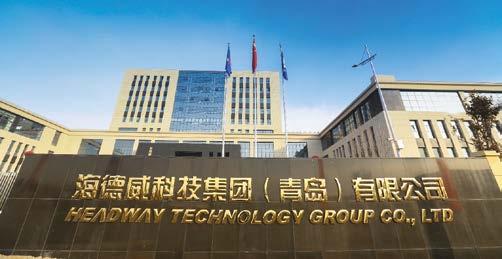
However, burning fuel oil has a number of negative externalities which impose heavy burden for environment-releasing CO2 which accelerates climate change, leakage risk is harmful for ocean animals, releasing SOX which is the main culprit of acid rain, etc.
Here at Headway, we’re helping shipowners to mitigate the harmful effects of burning fuel oil to comply with the regulations from IMO. Headway’s OceanGuard® Carbon
Capture, Storage & Utilization (CCSU) solution leverages the latest technology, ensuring the system remains stable as its height is only one-tenth comparing with traditional units. Instead of conventional carbon scrubber technology, the solution is capable of capturing and separating CO2 in good performance with less power consumption—even in harsh environments. In addition, a test of new solution for decarbonization, recently, is completed in Headway’s lab and the absorption capacity of this solution is now 3 to 5 times more compared to traditional one. By combining Headway’s Exhaust Gas Cleaning System and OceanGuard® CCSU, shipowners can save roughly 25% on marine fuel costs.
Headway’s OceanGuard® Exhaust Gas Cleaning System is a customized system with advantages of user-friendly and energy saving. It adopts ultra-micro atomization technology instead of packing layer, which overcomes the conventional disadvantages of scrubbers, such as increasing back pressure of main engine, inconvenient packing replacement, and cracks inside the scrubber. The system is capable of automatically adjusting the power of the sea water pump in time according to the on-site working conditions of the main engine to achieve the maximum energy saving effect and save every penny for the shipowners.
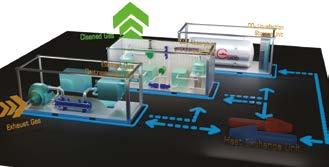
Fuel oil is not final solution for zero-carbon and the market is waiting suitable and reliable alternative fuels— including LNG/ LPG, methanol, biofuels, hydrogen, and ammonia — to serve as a promising solution to preventing pollution from the source. However, the alternative fuels also caused fierce arguments in recent years as its obvious disadvantages that impose barriers on commercial application. For example, hydrogen is viewed as a prospective fuel source, and many institutions in this field conduct extensive studies to bring this kind of fuel to market. However, the low-cost storage and large-scale production still require significant investments and long time. Moreover, hydrogen needs to be produced from clean sources to reduce well-to-tank emissions. Ammonia, as clean energy, faces the same challenges.
Although the long-term solution is on the way, the medium-term one is already available, as LNG-fueled and methanolfueled vessels have sailed on the sea. For example, OceanGuard® Methanol Fuel Supply System (LFSS), developed independently by Headway, has obtained an AiP certificate from RINA. OceanGuard® LFSS adopts modular and redundant design. Additionally, Headway has also developed the core filtration units, duplexfilters with high filtration accuracy. It’s estimated that LFSS with green methanol can help vessels reduce carbon emissions by as much as 90%; the fuel complies with the EEXI and EEDI standards and requires little retrofitting costs. In addition, the OceanGuard® Marine Fuel Supply System (FGSS) contributes further to carbon neutrality and two of them have been operated on two 11,000-dwt bulkers. This milestone follows a confirmed order for 10 sets.
Headway, as a trusted partner, remains committed to providing high-performance solutions, technical support, consultancy in complying with various regulations from IMO, classification societies, flags and more according to size and type of ship, route it sails, onboard space and engine type.
Green shipping is embedded in Headway’s vision and development strategy, and broader efforts to help the industry accelerate its journeys toward decarbonisation.
About Headway: Headway Technology Group (Qingdao) Co., Ltd. is a high-tech enterprise that takes
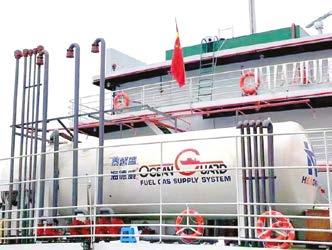
technological innovation as the purpose, specializes in the research, manufacturing, sales of high-tech marine equipment with comprehensive global after-sales service network.
www.headwaytech.com
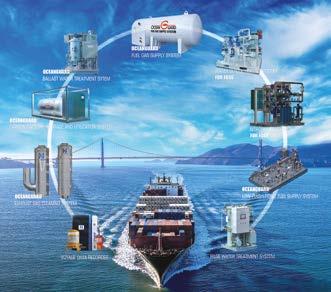

This strategic position in the Atlantic Ocean, located amid the major trade routes, allows the island to offer a wide range of services for bunkering supply, offshore projects and repairs, containerized and general cargo transshipment and, of course, for the cruise and tourism industries.
The Port Authority of Santa Cruz de Tenerife is the public body in charge of the management of a total of six ports in the western province of the Canary Islands, among them those located in Santa Cruz and Granadilla, being Santa Cruz the main hub in the province handling different types of maritime traffic, and Granadilla the most recent and relevant development in terms of port infrastructure in the Canary Islands in recent years.
Historically, the Port of Santa Cruz de Tenerife has been a key port of call for bunkering supplies, ranking among the top 5 Spanish ports in 2021 and with an excellent forecast and challenging opportunities for the upcoming years.
The Port Authority is also fully committed to further developing the bunkering operations and have approved attractive discounts off the ship tax of up to 30% for bunkering only operations.
And even not only that: our port has modern and safe means to carry out these operations, both at berthing points and for ships at anchor. Various types of fuel can be supplied 24 hours a day and 365 days a year thanks to our weather conditions and anchorage area.
The anchorage area of the Port of Santa Cruz de Tenerife is located in the Northeast of the port. That is, about five miles from the green light of the East Dock.
This area is well sheltered and protected from the prevailing winds in the Canary Islands and counts with natural protection thanks to the Anaga mountain range, offering outstanding conditions for bunkering supply and other operations at anchor. Also the conditions of its sandy bottom with hardly any obstacles are highly appreciated by seafarers from all over the world.
But not only excellent natural conditions play a role: Tenerife and its province make available a first class port infrastructure, with more than 17 kilometres of quays and drafts of up to 24 metres.

Our vision is to keep promoting switching to more environmentally friendly types of fuel and make easier for ships to meet the increasingly demanding sustainability requirements, and to position our ports as safe suppliers of cleaner energies.
Our efforts in this line go back at least as far as the 2017-2018 season, where our ports were pioneers in carrying out ship-toship operations for the LNG supply to the biggest cruises using Tenerife as port of call or home port.
Also, the aforementioned port of Granadilla presents itself a strategic logistic enclave for the energy transition: LNG, hydrogen
and offshore wind, increase the importance of the island as a key logistic hub in this Mid-Atlantic area.
European Legislation and tax advantages for industry operators
Finally, it should be noted that Tenerife has always had differentiated tax benefits within Spain and the EU. This unique economic and tax system provides excellent conditions to foster investment and trade.
Its economic and social development as a member of the European Union, make it the best destination for doing business, and offers a safe, stable and fully reliable economic framework.
Investors count with tools such as the Tenerife Free Zone (ZFT) or the ZEC (Canary Islands Special Zone), whereby companies meeting certain requirements and registering within the ZEC automatically and permanently benefit from a 4% corporate rate applied on the gross tax base on operations carried out materially and effectively in or from the Canary Islands, among other advantages.
https://www.puertosdetenerife.org/ commercial@tenerifeport.org
Fujairah Engineering Company LLC (FECO), which was established in 2004 in Oman and has since been operating the bunkering facility of 110,000 m³ storage capacity, leased the now called FECO bunkering facility and has been supplying bunkers at Salalah Port since April 2022.
M/T Sea Dweller, a 2002 built bunker barge stationed in Salalah, with a 800MT per hour pumping capability, and 3,420 DWT, supplies Low Sulphur (0.1%) Marine Gasoil ISO 8217 and Very Low Sulphur Fuel Oil (VLSFO) ISO 8217 with plans to introduce High Sulphur Fuel Oil in the future.
In addition to deliveries by barge, FECO has the ability to deliver Marine Gas Oil and VLSFO via pipe and LSMGO via road tankers at certain Salalah Port berths.

Marketing of the products will be done exclusively by Oil Marketing & Trading International D.M.C.C. (O.M.T.I.) and all customers’ enquiries will be handled by Dimitri Martinuzzi available at the following contact details:
bunkers@feco-oman.com • oman@oil-marketing.com Tel: +971 4 4350500 • Mob: +971 50 433 0507
Complimenting the company’s bunker supply operations, FECO, with its 110,000 m³ capacity terminal inside Salalah port and its 18-year experience in trading and chartering, is able to offer the following services:
• Tanker Chartering
• Cargo Trading
• De-bunkering
• Third Party Oil Storage
For all enquiries, you can contact: bunkers@feco-oman.com & terminal@feco-oman.com

GOIL Company Limited (GOIL) is a Public listed Oil
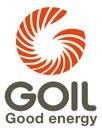
The company is ISO 9001:2015 as well as ISO 14001:2015 Certified.
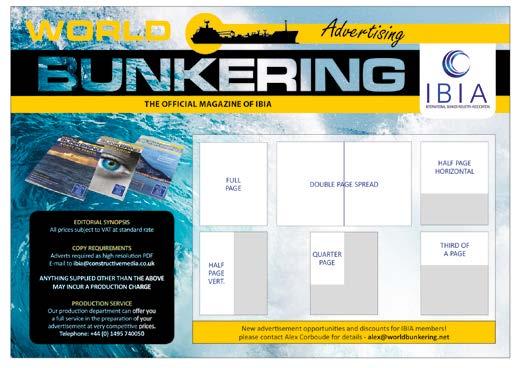
GOIL has as its subsidiaries, GO Energy, a Bulk Distribution Company Limited and GOIL Offshore Limited to cater for its upstream business.
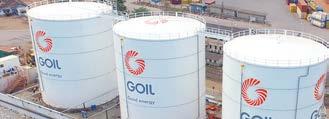
GOIL is currently the market leader in additivated premium quality fuel (Super XP RON 95 and Diesel XP) and has the largest and growing retail network in Ghana with over 400 stations. The marketing arm is represented in seven zones country-wide.
GOIL also supplies Mining Diesel to mining firms in the country and the leading LPG marketer in Ghana.
GOIL presently supplies MGO ex-pipe and RTW from three main ports, Tema and Takoradi Ports as well as the Sekondi Naval Base and markets premium Lubricants some of which are blended locally.
The rest are imported. GOIL also supplies aviation fuel to major airlines.
www.goil.com.gh
On November 1, 2022, technical and operational amendments to the International Marine Organizations regulations (IMO regulations) on carbon intensity measures (MEPC.340(77) 2021 Guidelines for Exhaust Gas Cleaning Systems) entered into force requiring ships to improve their energy efficiency in the short term and thereby reduce their greenhouse gas (GHG) emissions.
Accordingly, it will be mandatory for all ships to calculate their attained Energy Efficiency Existing Ship Index (EEXI), to measure their energy efficiency, and to initiate the collection of data for the reporting of their annual operational carbon intensity indicator (CII) and CII rating as of January 1, 2023.
PureteQ’s next generation scrubbers and marine water monitoring system have taken these measures into account and thus making it easier for shipowners to not only increase their operational performance but also to report their environmental performance according to the new regulations.
PureteQ has designed, delivered, and commissioned built-to-fit maritime scrubber systems (exhaust gas cleaning systems) since 2014. We used to design
primarily for ships with up to 30MW installed power, but today our scrubber program can support very big ships with up to 100MW installed power, as well as other ships of any size or trade pattern.
All scrubbers come with optimized design and our well-known user-friendly human machine interface (HMI) control system with real-time remote access. We also design the smallest scrubber in the business for all loads. We have proven shorter installation time, ideal energy performance, and we have a more digitalized and easier-to-use product.
PureteQ scrubbers are based on patented principles, enabling highest possible removal of particles, important not only for public health, but also critical in EGR applications.
The PureteQ WMS013 Marine Water Monitoring System designed for Exhaust Gas Cleaning Systems (EGCS) and Exhaust Gas Recirculation (EGR) is type approved and compliant to the MEPC 259 (68) / MEPC 340 (77) as well as the EPC317 guidelines.
It is designed as standalone or combined for simple installation and operation with only one central monitoring cabinet

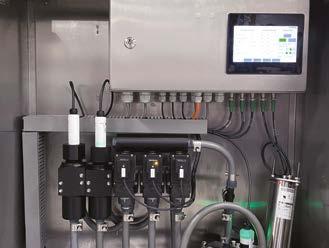

which significantly reduces the cost of sensor maintenance. Installation can be customized to any type of scrubbers and brands.
As part of PureteQ’s scrubber service agreements, clients are now offered a new web-based Scrubber Performance Optimization Tool (Pure-SPOT) that contains environmental performance reporting and optimization of scrubbers across fleets. The software features the measuring of technical MARPOL compliance, operational performance (impact on SFOC), as well as environmental performance reporting, such as reduction of CO2, Sulfur, and soon, particulate matter (PM).
The software is a perfect match to the new IMO regulation on EEXI & CII from a wellto-wake emissions monitoring basis that is critical to assessing lifecycle GHG emissions from marine fuels. The software will allow the crew across ships / fleets to learn from each other, hence reduce operating expenditure (OPEX).
Contact info: Anders Skibdal, CEO (+45) 4017 1400 anders@pureteq.com

SEA CROWN MARINE SERVICES DMCC is registered legal entity in Dubai, UAE and is the EXCLUSIVE PHYSICAL BUNKER SUPPLIER in Iraq Ports i.e. Basra, Khor-AlZubair and Umm Qasr and have started consistent Bunkering Operation from July 2019.
Sea Crown Marine Services has been serving the maritime community since 2019 and is one of the biggest marine agents in Iraq handling most of the tanker movements for Khor-Al-Zubair and Umm Qasr Ports and STS operations at KAZ OPL.
Sea Crown has contract with State Company for Maritime Transport (SCMT) since 2016. We are the only company to handle activities in Iraq related to Bunkering vessels and any floating units, Fresh Water, Provisions, Lubricants,
Husbandry Services, Spare Parts , Health Services for Marine Crews and performing Repair and Maintenance to all ships and floating maritime units.
Sea Crown Marine Services is trusted by world’s leading shipping majors for their bunkering requirements for its competitive pricing and services on par with major bunkering ports in the world and currently doing Volume of 25,000 to 30,000 MT's per month with Major VLCC and Tanker Operators and Refiners. Sea Crown Marine Services has supplied more than 500 Vessels smoothly in last 6 months Majorly to VLCC, Suez-max and Afra-max arriving at Basra Oil Terminal for Crude oil operations.
Basra OPL is an ideal location for bunkering of VLCCs as there is no draft restrictions and NO CALLING CHARGES levied and NO

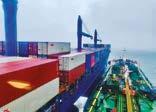
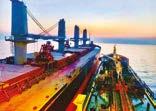
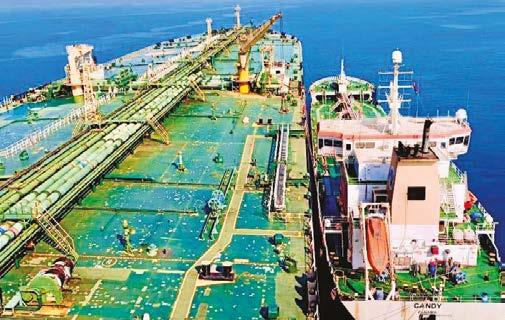
AGENT required for vessels coming to Iraq for BUNKER ONLY CALL We are currently operating with two barges with a total barging capacity of 27kT and supplying all grades of marine fuels – VLSFO S MAX 0.5%, IFO 380cSt, IFO 180cSt, MGO S max 0.5% and LSMGO 0.1% at berth and anchorage of all Iraq ports.
Telephone: +971 4589 6355 Mobile: +971 5868 81605
Email: marketing@seacrowndmcc.com seacrowndmcc.com
Office 204, Indigo Icon Tower, Cluster F, Jumeirah Lake Towers, Dubai, United Arab Emirates, PO Box : 213204
IBIA
Nigel Draffin recalls the past three decades of IBIA, from the early days when a few far-sighted members of the bunkering and shipping industries came together a set up a membership organisation that has gone on to be the global voice of bunkering and a significant player in shaping policy at IMO.
As the current Chair, Timothy Cosulich sets out how IBIA plans to represent its members and the interests of the bunker sector in a rapidly changing and increasingly challenging world. He explains why IBIA is needed now more than ever.
While use of mass flow metering systems on bunker barges has been pioneered by Singapore there is now momentum building to make this standard practice in major bunkering hubs around the world? We look at the latest developments.
I.T. Cybersecurity has become a major concern for the shipping and bunker industries. What do companies need to do protect themselves from cyber attack?
As the range of different types of fuel has widened, lubricant manufacturers have had to develop specific products for the new fuels that are coming into use. We look at how the manufacturers have responded.
Western Mediterranean
Our annual review of this important bunkering region, which now finds itself uncomfortably close to the war in Ukraine. Meanwhile the creation of the Mediterranean ECA draws closer.
Americas and Caribbean
The return of Caribbean cruising following the Covid shutdown of the industry has been a welcome boost. But, as the world economy teeters on the edge of recessions, how is the bunker industry faring?
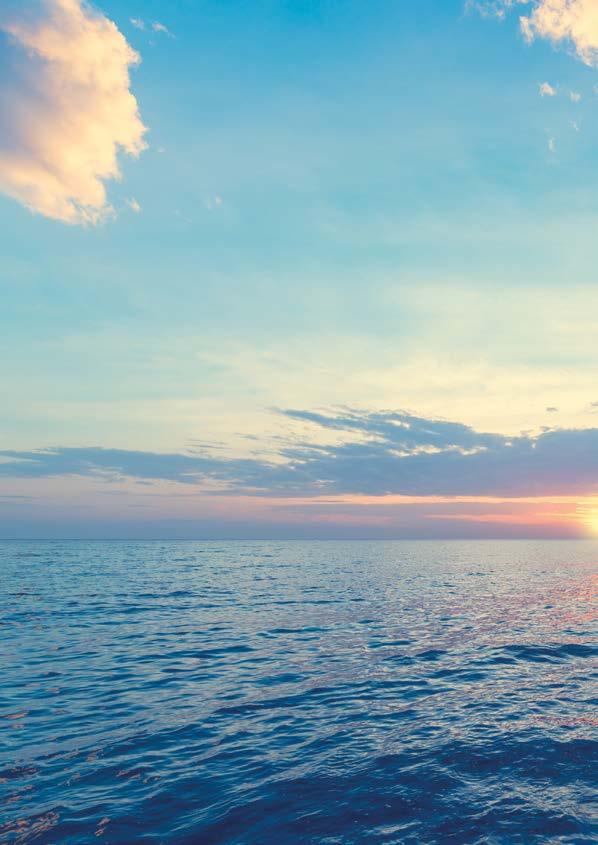
News, Views & Analysis Plus: Interview, Industry News, Environment, Testing, LNG, Lubricants, Innovation, Legal News, Equipment and Services, Diary, Event Previews & Reviews
FUJCON (FUJAIRAH BUNKERING AND FUEL OIL FORUM)
FUJAIRAH, UAE

Along with S&P Global, the Government of Fujairah & Port of Fujairah, are pleased to hold the 13th International Fujairah Bunkering & Fuel Oil Forum (FUJCON 2023) from 13-15 March 2023 in Fujairah, UAE, under the Patronage of H.H. Sheikh Hamad bin Mohammed Al Sharqi, and the support of the Fujairah Oil Industry Zone.
FUJCON 2023 Conference Theme “The Maritime Energy Transition & Future Fuels” For more information: https://plattsinfo.spglobal.com/fujcon.html
BUNKERING MANUAL WEBINAR
Date: Tuesday 31 January at 13:00 GMT/14:00 CET The BIMCO & IBIA Shipmaster’s Bunkering Manual is the unique result of cooperation between IBIA and BIMCO to create insight and practical understanding of bunkering processes across the shipping sectors. This joint webinar will give a taster of the contents of this practical, hands-on industry guide aimed at facilitating smooth and safe bunker deliveries around the world.
https://ibia.net/events/
CAPE TOWN, SOUTH
Maritime Week Africa 2023 will examine developments in West Africa, Southern Africa, East Africa, and Mauritius, and will identify business and market opportunities, both for those already based in Africa and for those looking to expand into the Continent through targeted acquisitions, investments or new partnerships.
For more information: https://www.petrospot.com/events/mwaf23
LONDON, UNITED KINGDOM
Join IBIA as we celebrate 30 years as an association. The much-anticipated IBIA Annual Dinner finds a new home for 2023, at the elegant and modern Park Plaza Westminster Bridge for an unforgettable celebration and black-tie evening shared with our members and their guests. As a well-established fixture in the bunker industry’s calendar, we are looking forward to welcoming you for an evening of networking and sharing our very special anniversary with our valued members. Should you wish to sponsor or know more please email: tahra.sergeant@ibia.net
For more information: https://ibia.net/event/ibia-annual-dinner-2023/
brings together key opinion leaders and industry leaders through conferences, dialogues and forums. For more information: https://www.smw.sg/





